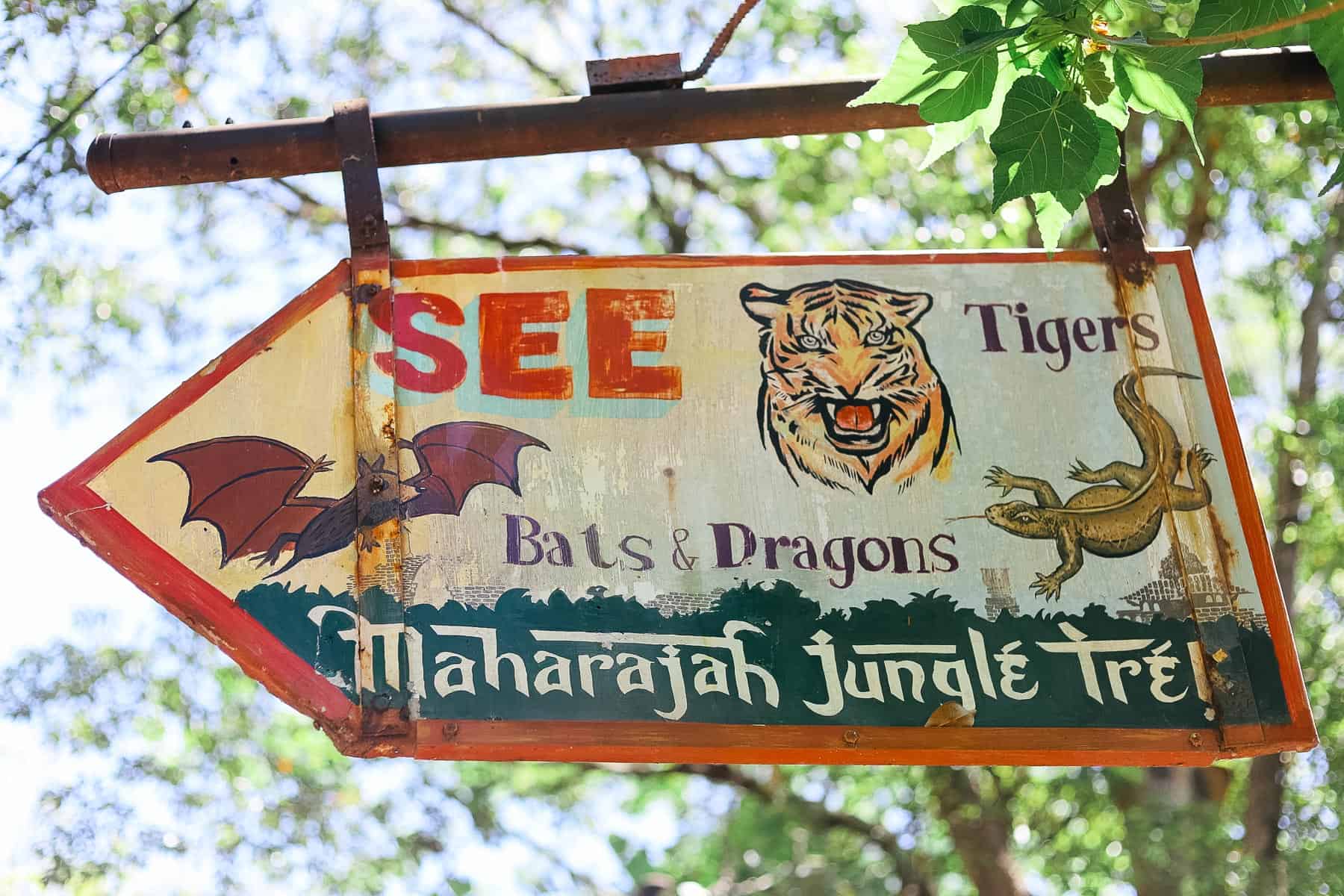The Maharajah Jungle Trek at Disney’s Animal Kingdom (An Attraction Guide)
The Maharajah Jungle Trek is a walking trail through the mythical Anandapur Royal Forest, which is most commonly known for its Sumatran Tiger habitat. In addition to the tigers, guests will have the opportunity to see a variety of other wild animals and over 50 species of birds. You might even encounter a few bats in their open air habitat. However, you’ll have the opportunity to skip that area if you prefer.
We’ve walked through the Maharajah Jungle Trek at Disney’s Animal Kingdom countless times. Below, we’ll take you on a virtual walk through the ancient ruins and discuss the animal encounters you’ll find. We’ll also discuss the aviary with exotic birds at the end of the trail. Like the bat habitat, this area is skippable, but we think it’s worth the walk-through.
As you probably know, a visit to Disney’s Animal Kingdom is about so much more than hitting a few thrill rides and bouncing to the next park. When it comes to theming, the park is a work of art with plenty of places to explore.
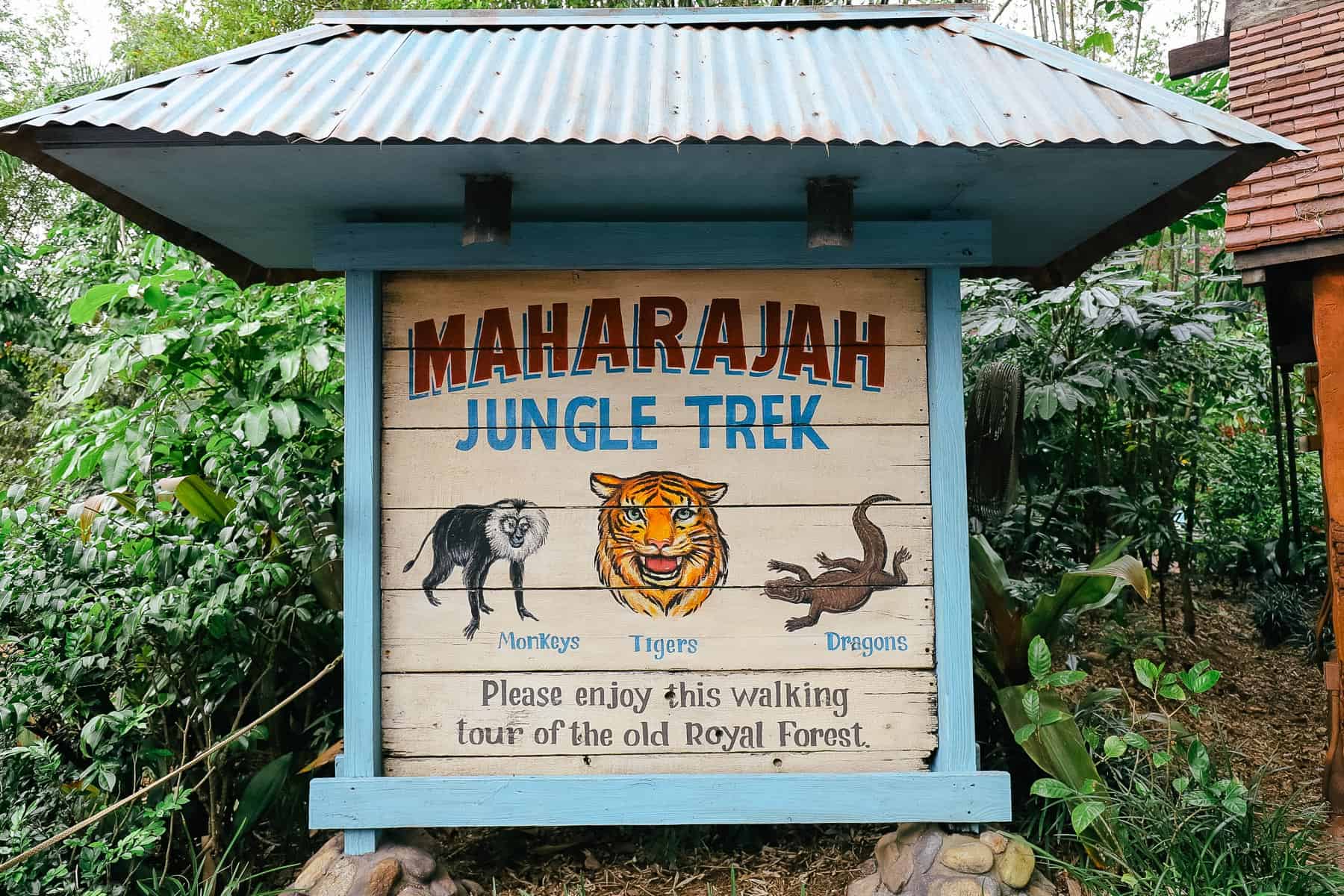
Before we get into the specifics of the trail, here are a few references for this attraction.
| Maharajah Jungle Trek | Disney’s Animal Kingdom Theme Park |
|---|---|
Location: | Asia |
Height Requirement: | None |
Lightning Lane: | No |
Ride Type: | Walking Trail |
Seats Per Vehicle: | N/A |
Rider Switch: | N/A |
Early Theme Park Entry: | No |
Extended Evening Hours: | No |
Good For: | All Ages |
Scare Factor: | None |
Must-Do List: | Medium to High |
Perfect For: | Animal Lovers |
Special Mention: | It’s a beautiful trail with many animal encounters. |
Accessibility: Maharajah Jungle Trek is a self-guided walking tour. Guests can remain in a wheelchair or ECV for this attraction. However, due to the nature of the experience, service animals are not allowed in some areas of the trail. An audio description is available for this attraction.
Review
Maharajah Jungle Trek’s entrance is toward the back of the Asia section of Disney’s Animal Kingdom. It sits directly behind Kali River Rapids, a water raft attraction. While the Sumatran tigers are the biggest draw for the trail, several other unique species call Maharajah Jungle Trek home. For instance, there’s a Komodo Dragon, Malayan Flying Fox (bats), Water Buffalo, Lion Tailed Macaque, and various birds. The trail was originally home to Malayan Tapirs, an endangered species. However, they have been absent for some time.
A sign at the trail’s entrance shares part of the fictional backstory of the Anandapur Royal Forest, where the trail resides.
“Since very ancient times, the Rajahs of Anandapur have hunted tigers in this forest. In A.D. 1544, King Bhima Disampati decreed the forest a royal preserve closed to all save his guests and built a royal hunting lodge whose ruins lie nearby. After 1948, the Royal Forest was given to the people of Anandapur. Today the forest protects not only the remaining tigers and other wildlife but is a valuable watershed of the Chakranadi River and some of the last remaining virgin forest in this region.”

Maharajah Jungle Trek usually opens with the park. However, it closes based on what time the sun sets. For instance, on the day I took this photo, it was open through 6:30 p.m. When it gets dark earlier, the trail usually closes by 5:00 p.m.
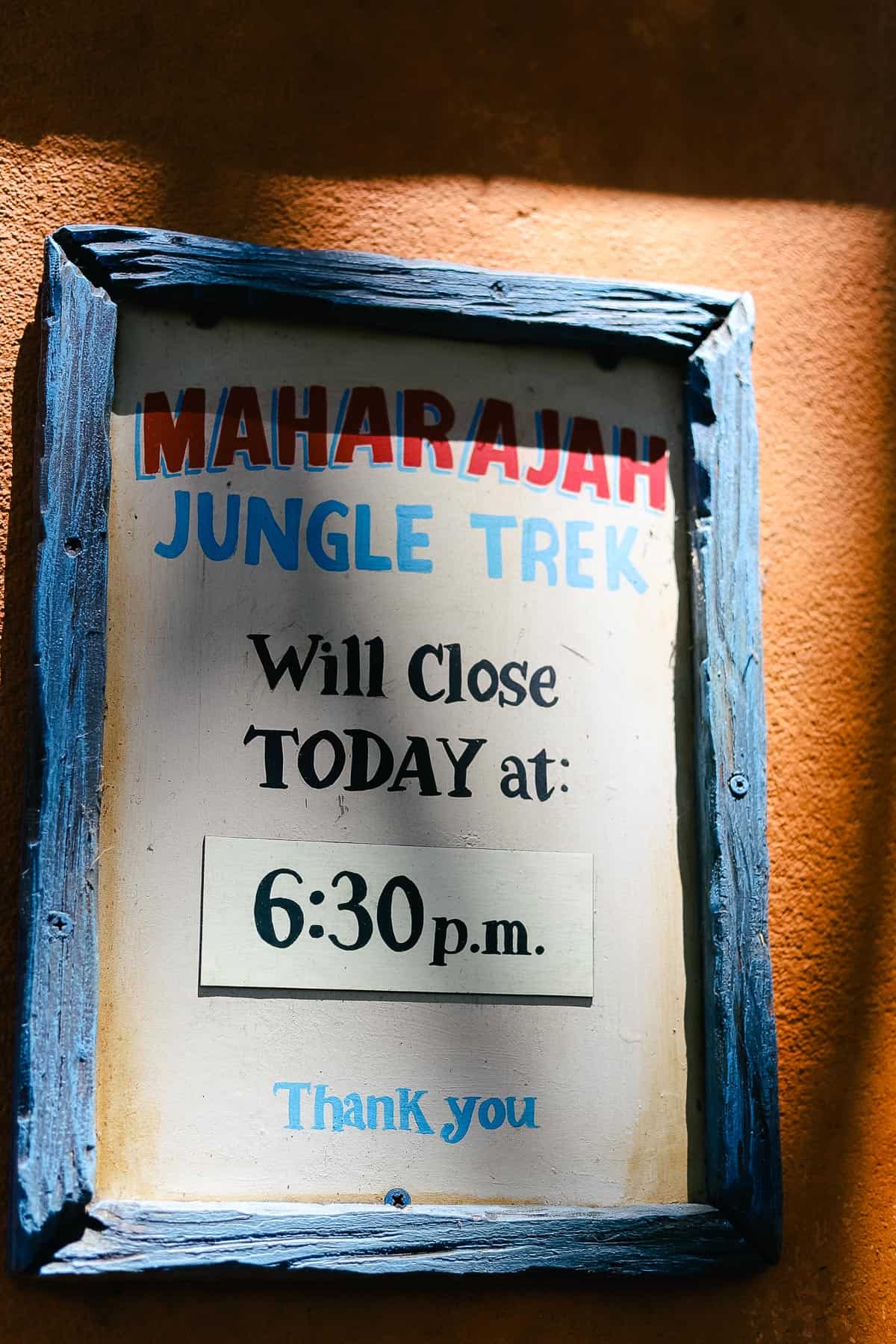
It’s difficult to say when the best time to walk the trail is. The tigers are often more active in the morning until about lunchtime. However, I have found the trail pleasant and less busy during the latter part of the day. That’s usually when the tigers are napping, which can make them difficult to see. A digital guide map is available by scanning the QR code past the trail’s entrance.
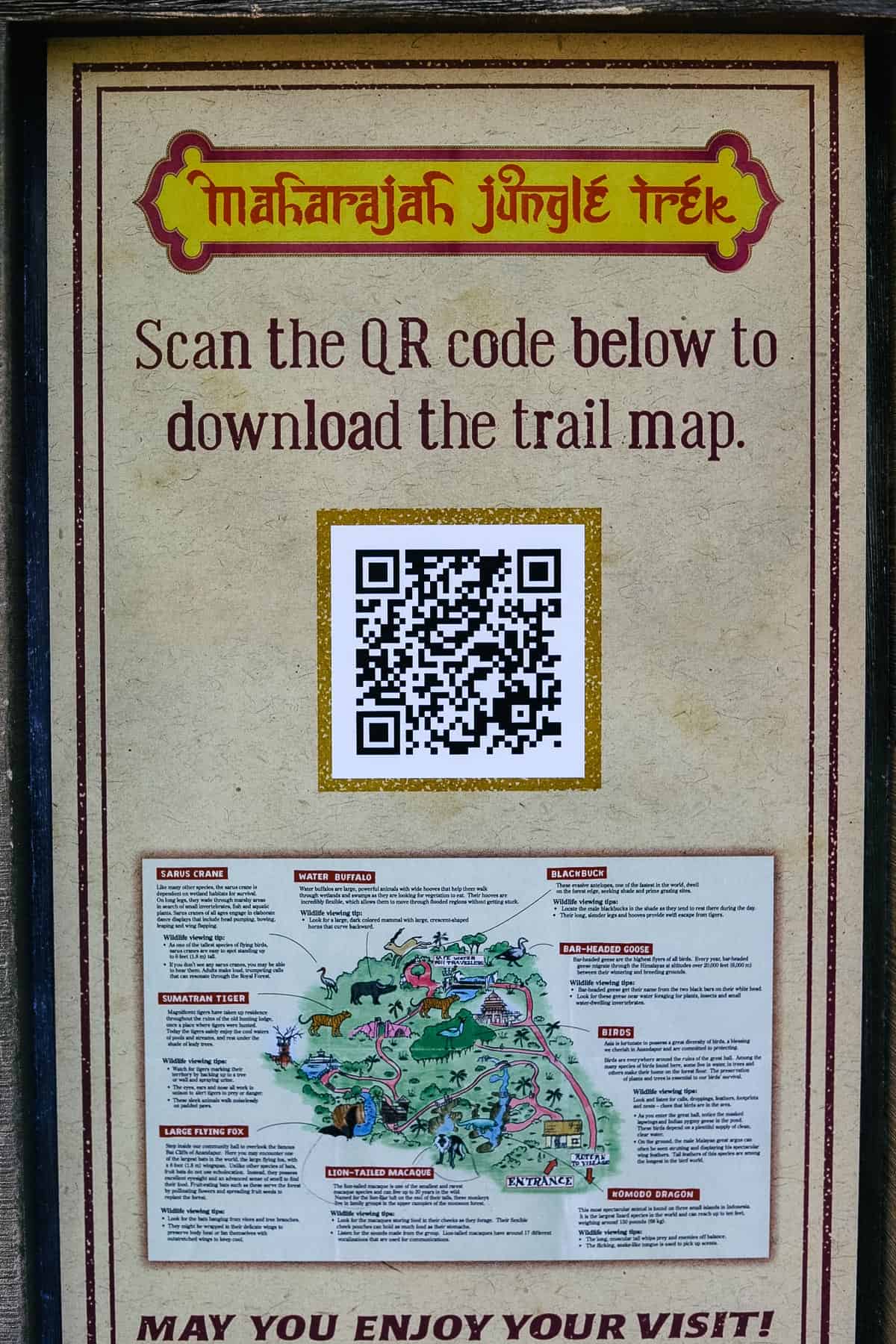
Since the trail is self-guided, you might enjoy having the trail map as a reference. When glancing at the map, the trail might appear to be a pretty lengthy walk. However, it’s only about 1/3 of a mile long, and plenty of benches are available if anyone needs a break.
You will encounter a few Wilderness Explorer stops along the trail. If your children are participating in the program, keep your eyes peeled for the WE signs.
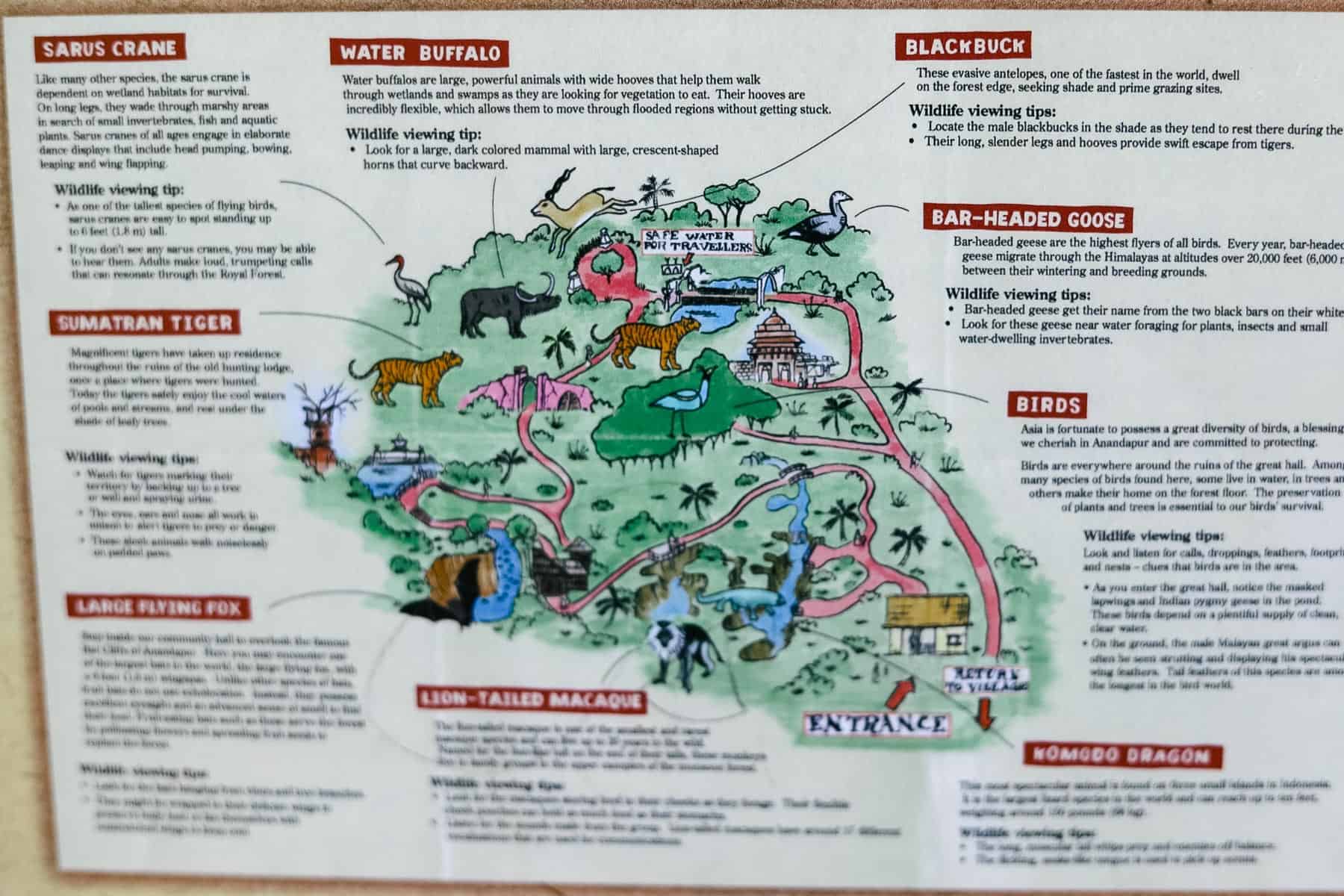
As we start down the trail, we run into the first habitat. This area is home to the Komodo Dragon, the world’s largest lizard. She is usually lying on a large rock, taking in a little sunshine.
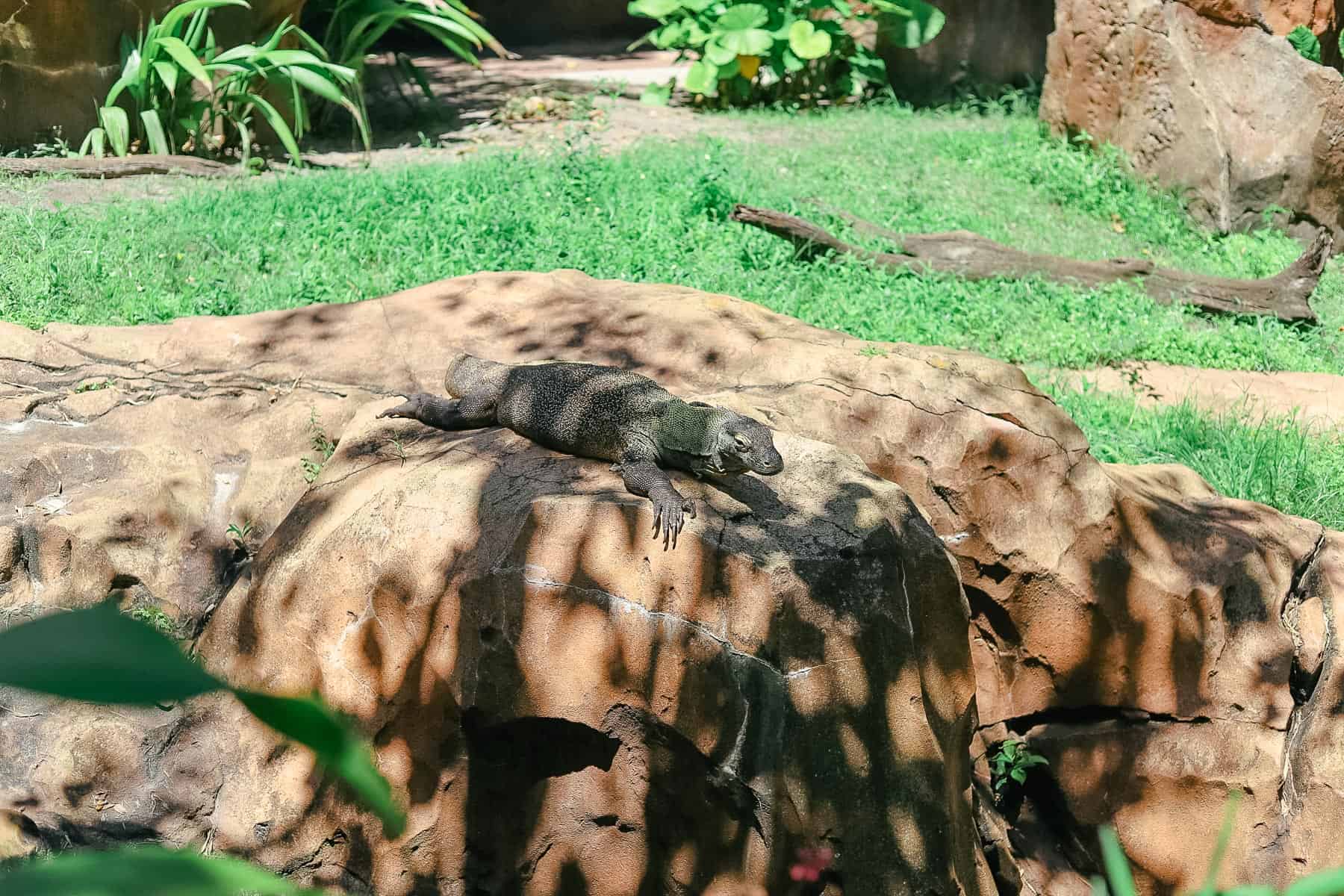
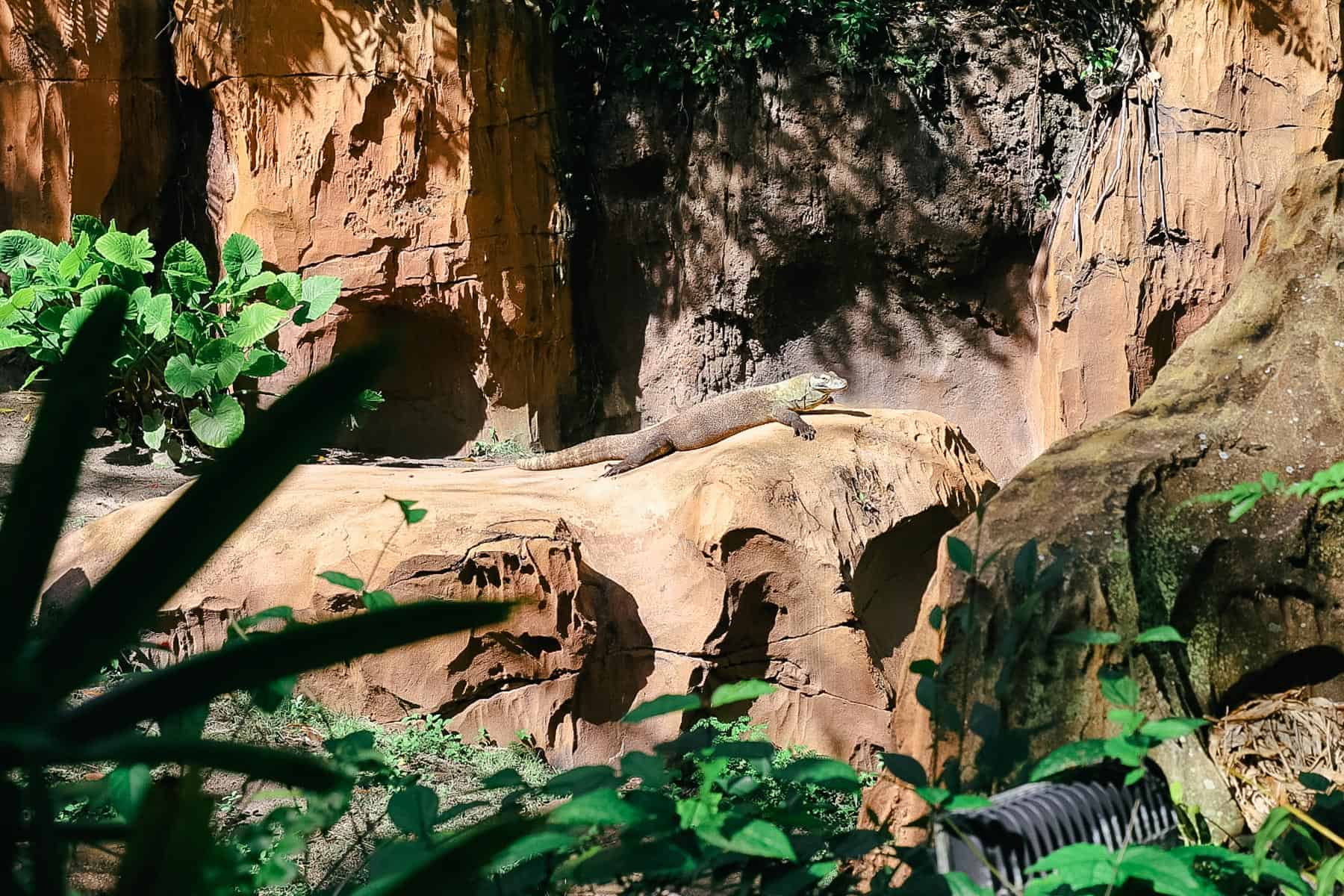
However, if you visit on a cooler day, you might not see her. Like most Floridians, they don’t care for cooler weather.
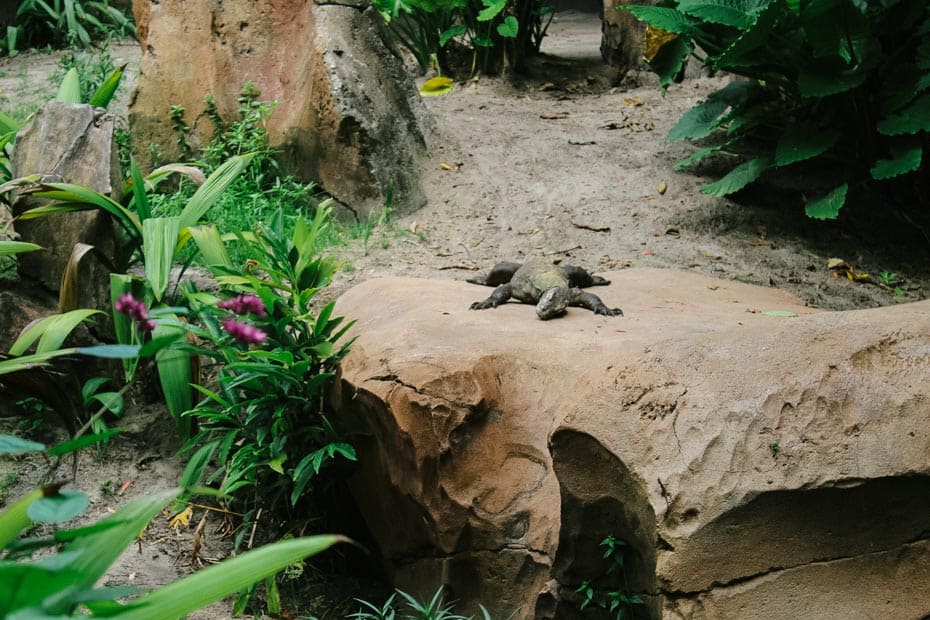
Next, we come across the home of the Lion-Tailed Macaque.
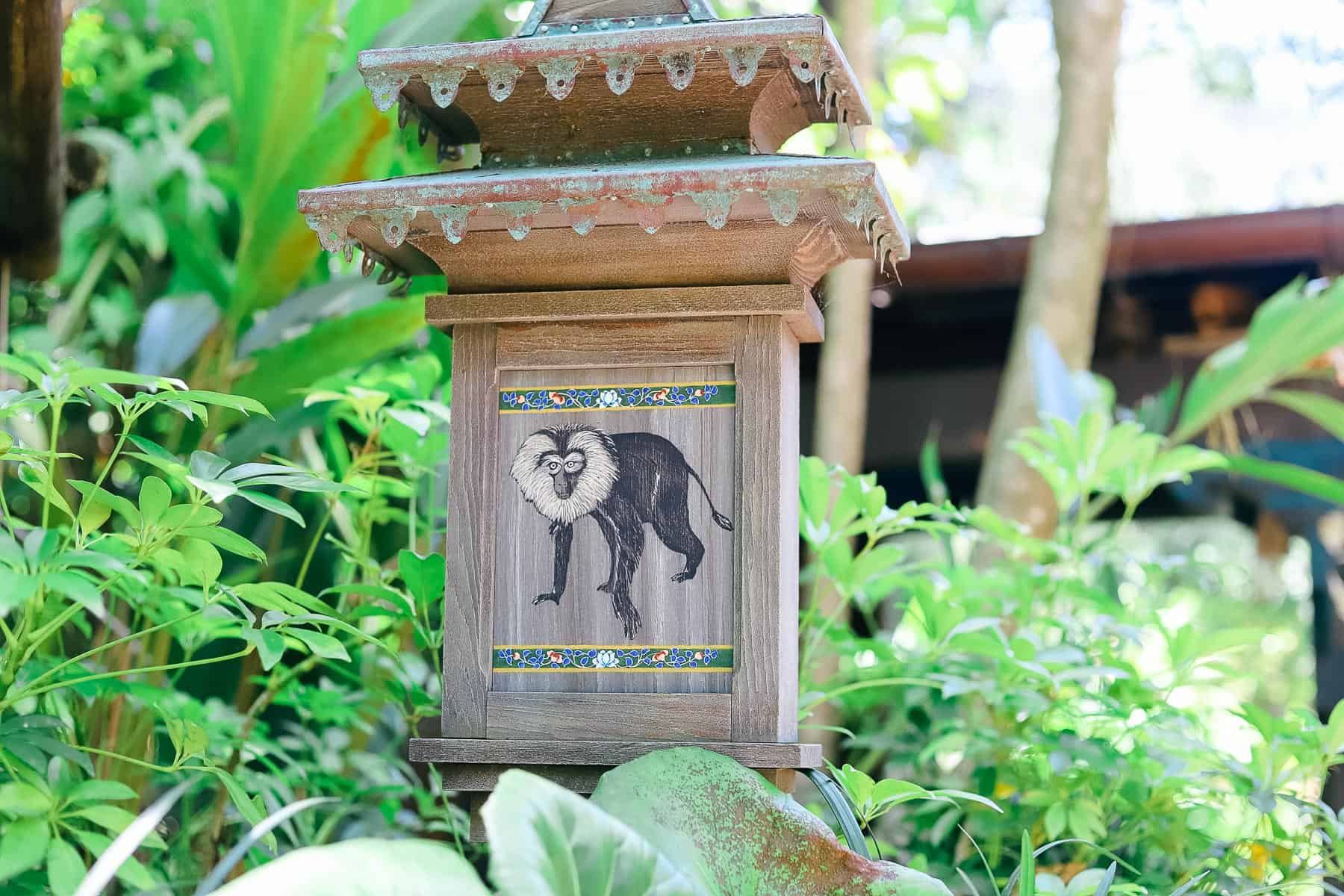
Typically, we see two to three of these guys hanging out. It’s fun to stop and watch them for a bit. A cast member is often available at this habitat. They will answer questions and share fun facts about these old-world monkeys.
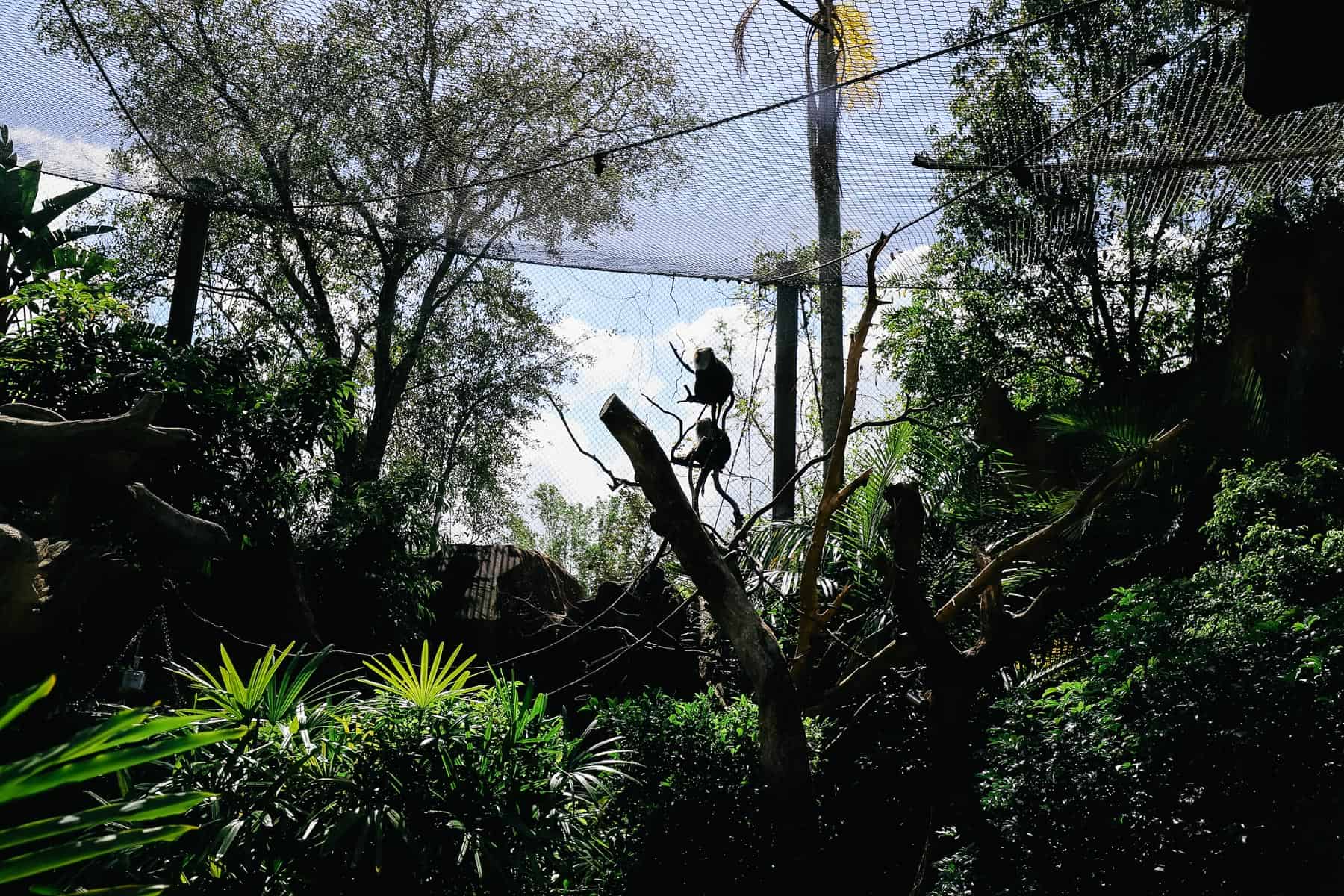
Immediately past the Lion-tailed macaques, you’ll enter a smaller building. Here, you’ll have the opportunity to continue into an exhibit with bats, or you can bypass this area and continue toward the tiger enclosures.
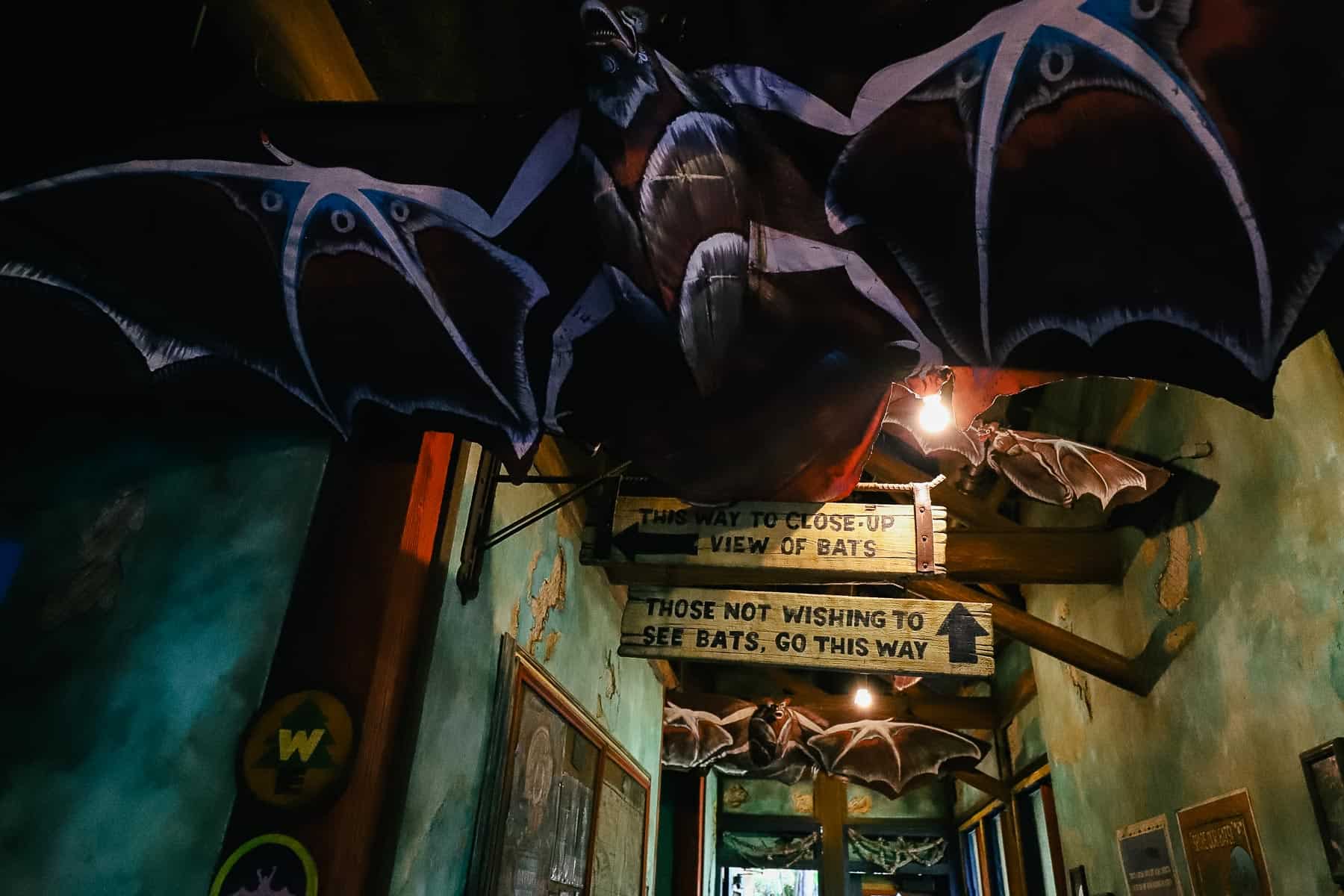
The enclosure is home to Giant Flying Fox and Rodrigues Fruit Bats. Inside, you’ll find information about bats and how they contribute to life in the forest. Did you know that bats are pollinators?
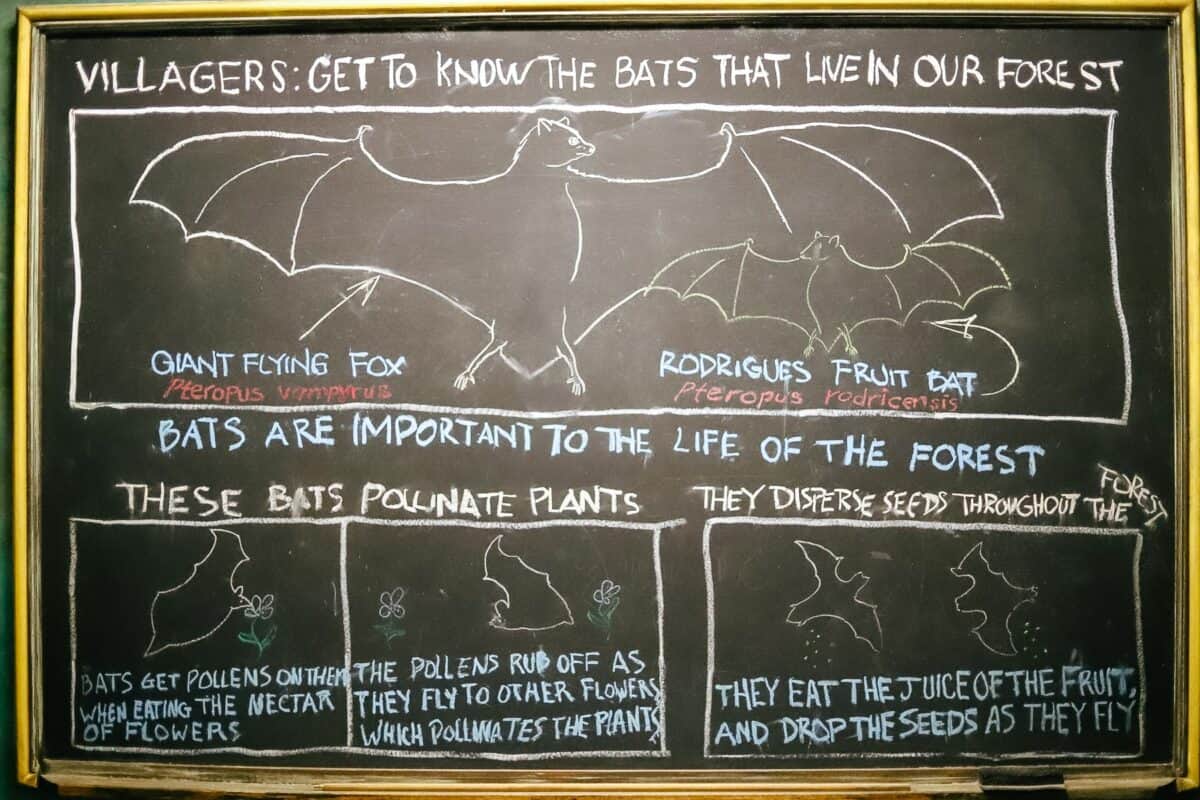
Toward the back of the room, you can see you can see the bats hanging from the trees. Unfortunately, they tend to blend in with the trees. But you can see one hanging below toward the center of the picture.
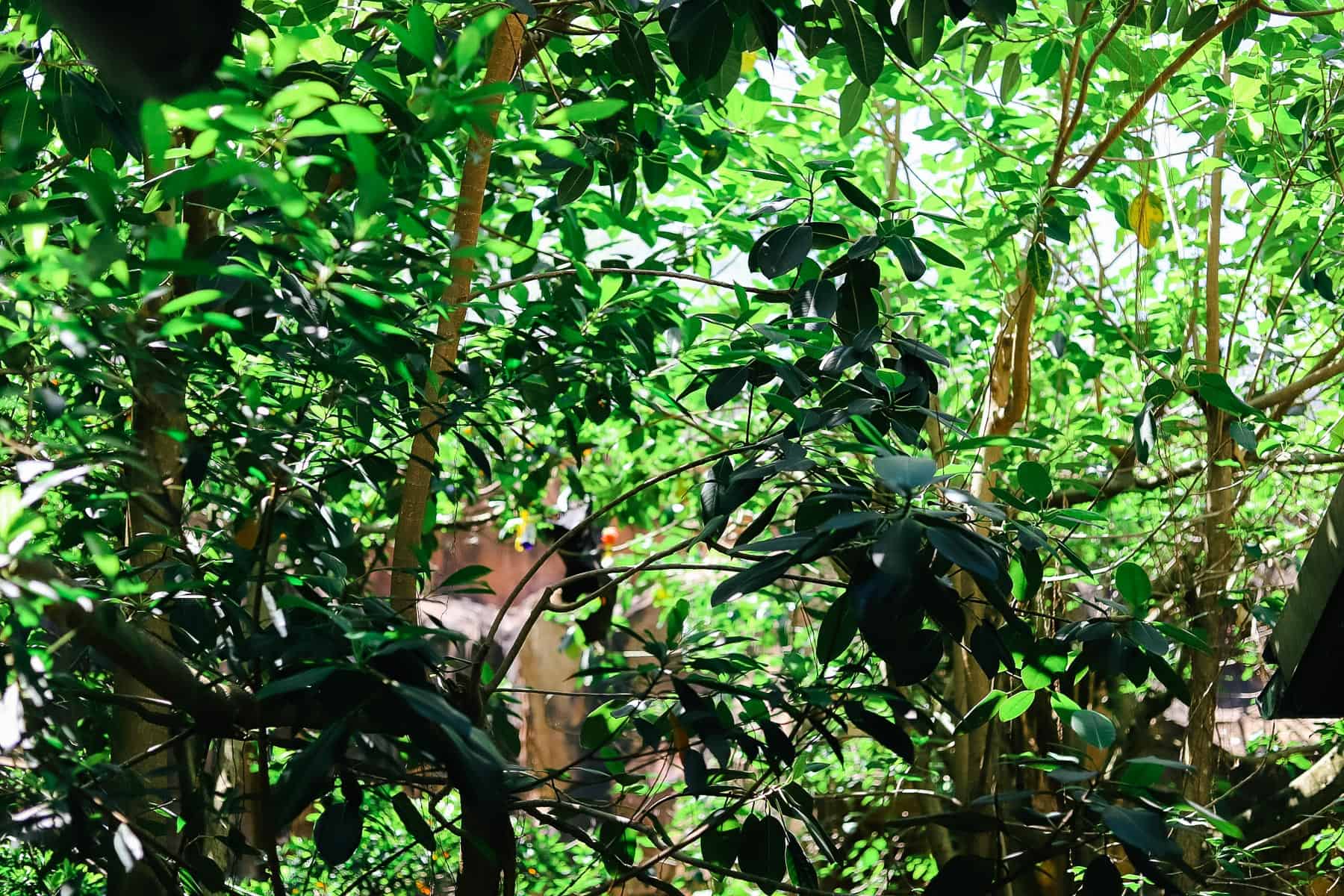
Another display in this area has a Tree Monitor.
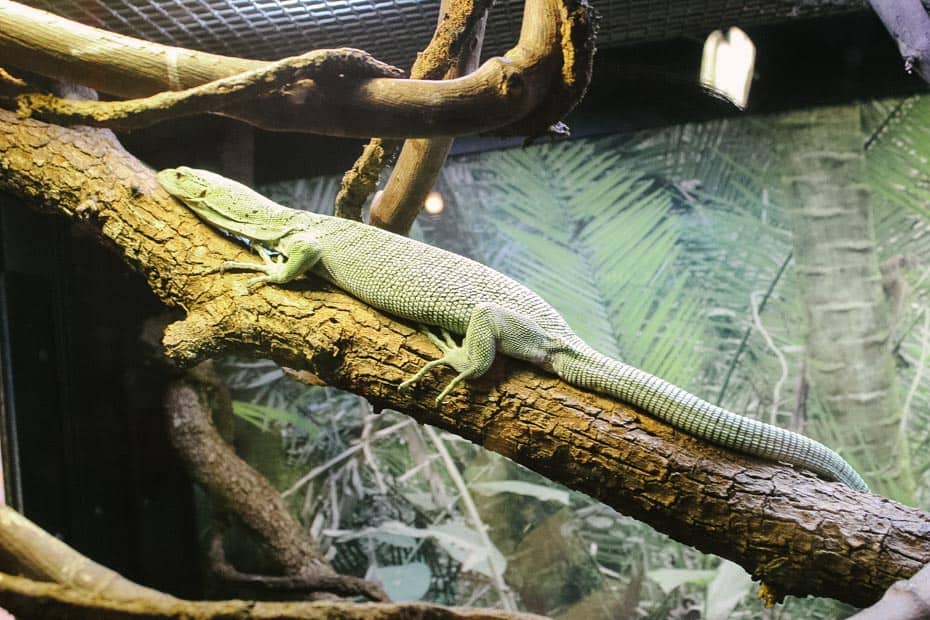

A prehensile-tailed skink is on the opposite side of the room.
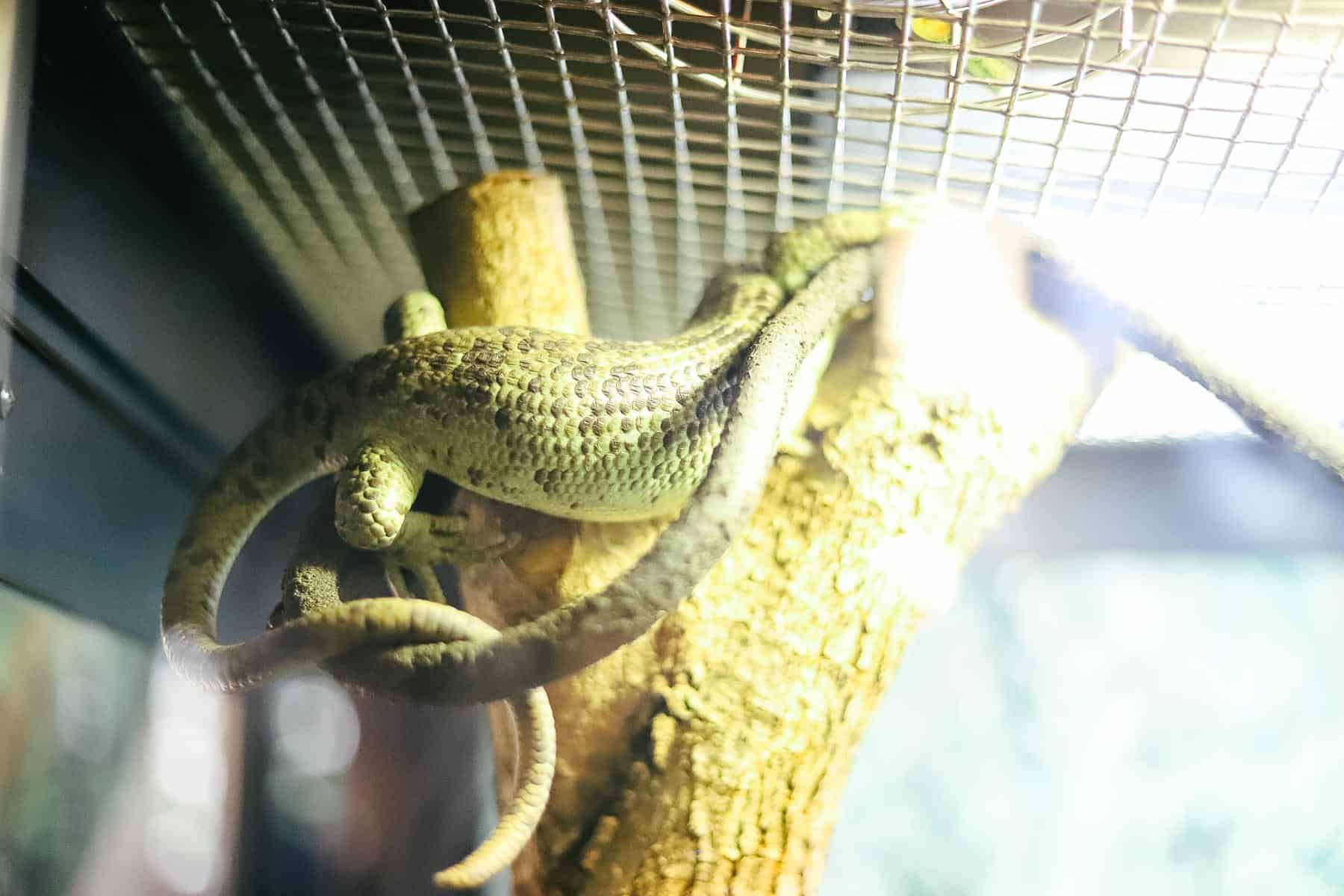

Sumatran Tigers at Maharajah Jungle Trek
As we continue along the Maharajah Jungle Trek, it’s time to be on the lookout for a few tigers.
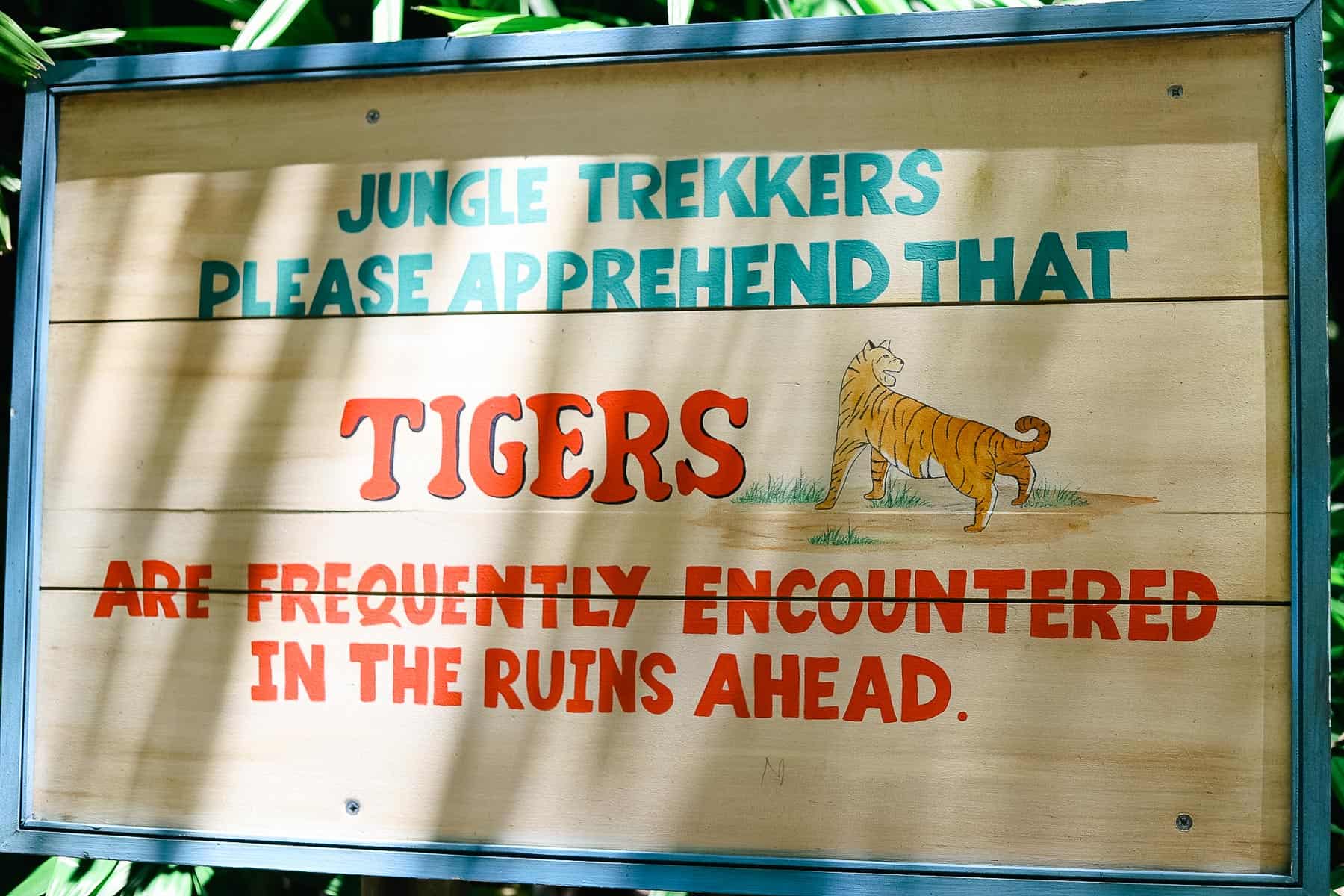
Typically, the male tiger is housed in the first large habitat. If you look closely at the photo below, he’s in front of the pair of double doors. Update: In 2025, a new baby tiger cub joined the habitat. At this time, he and his mom, Sohni, will likely be in the first tiger viewing area when you visit the trail. He is expected to remain under his mother’s care for the next 18 or so months. You can read more about baby Bakso’s debut here.
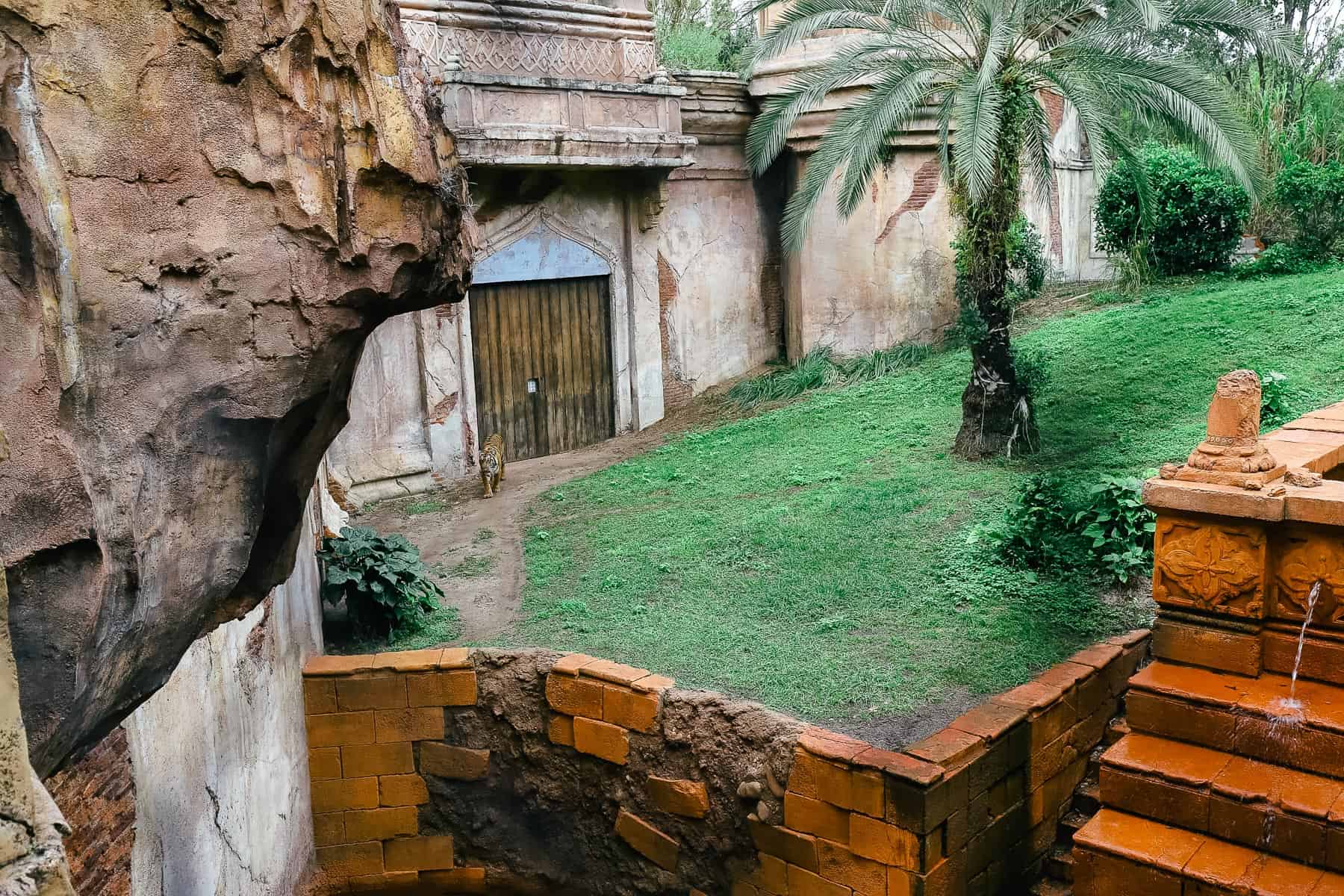
Sometimes the tigers are moving around, and you can easily spot them. Other times, they are challenging to locate. As mentioned earlier, the tigers tend to be more active earlier in the day. On one of our visits, we caught one playing with a toy designed to look like a carcass. The cast member at the exhibit said they spray it with meat and give it to the tiger as a treat.
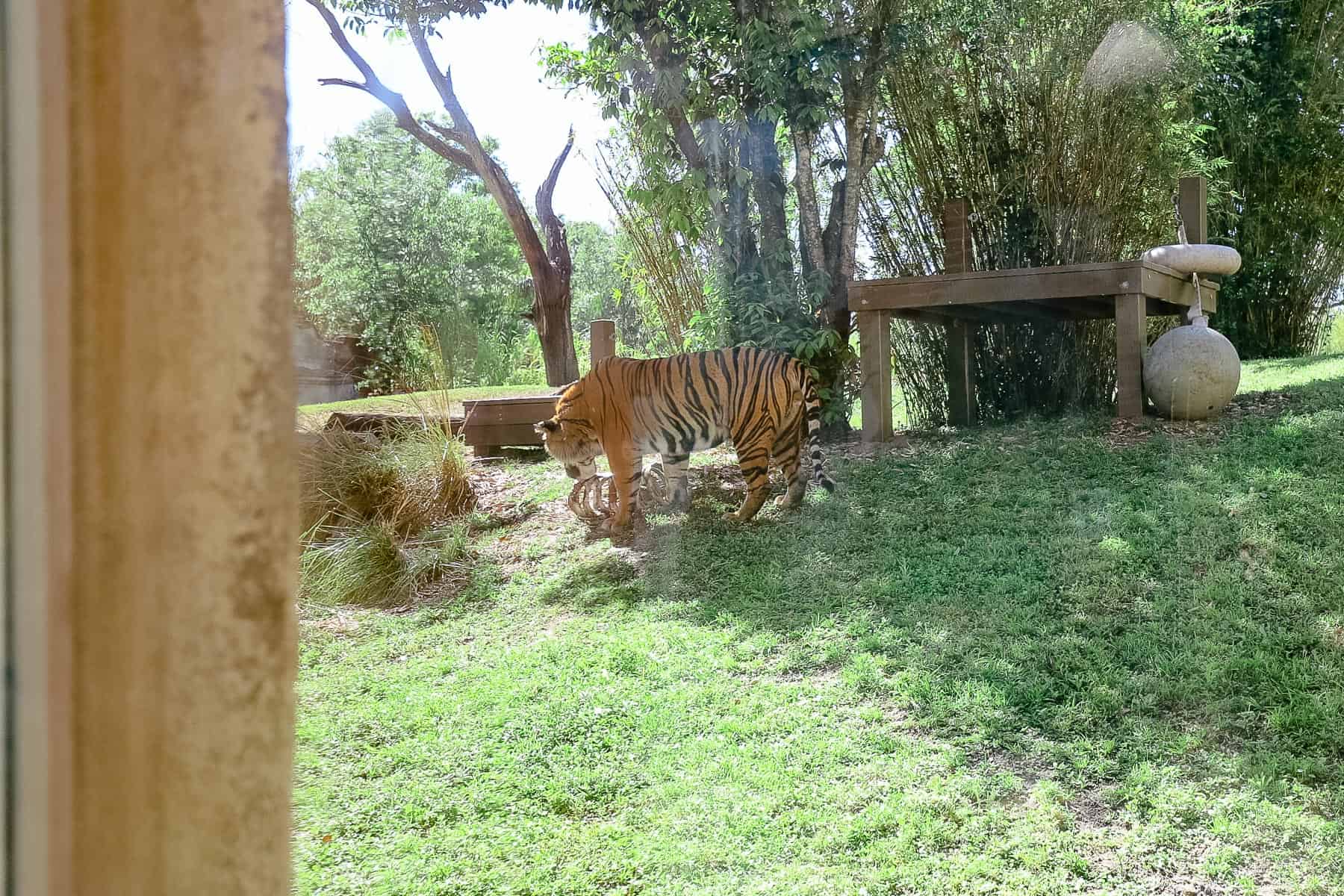
On another visit, I saw him playing with what looked like a ball. However, as you can imagine, a tiger could quickly destroy a ball. This was some sort of metal object.
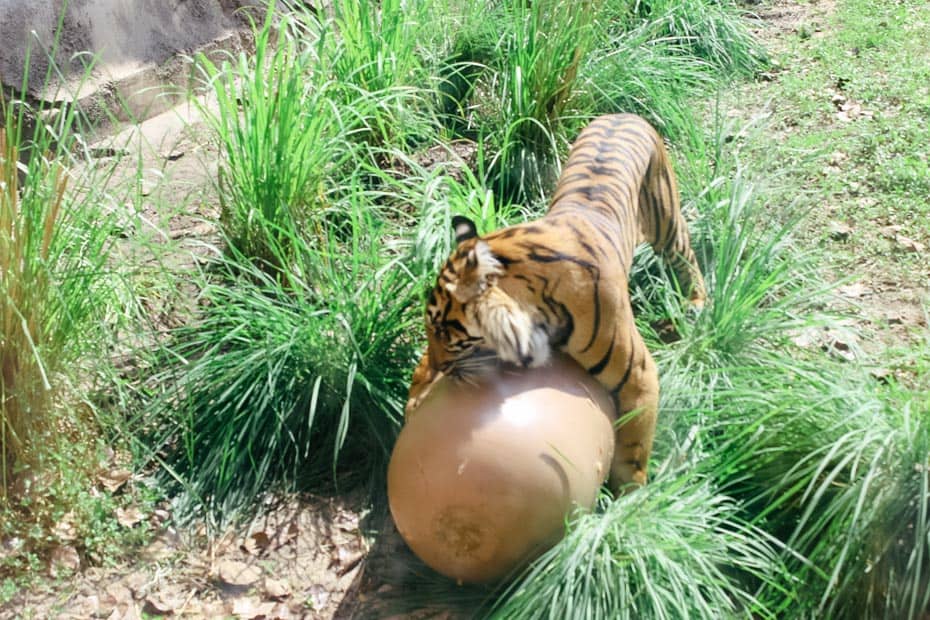
In addition to the tigers, the scenery in this area is stunning. Beautiful ruins are painted with murals portraying a sad story of the hunter and the hunted.
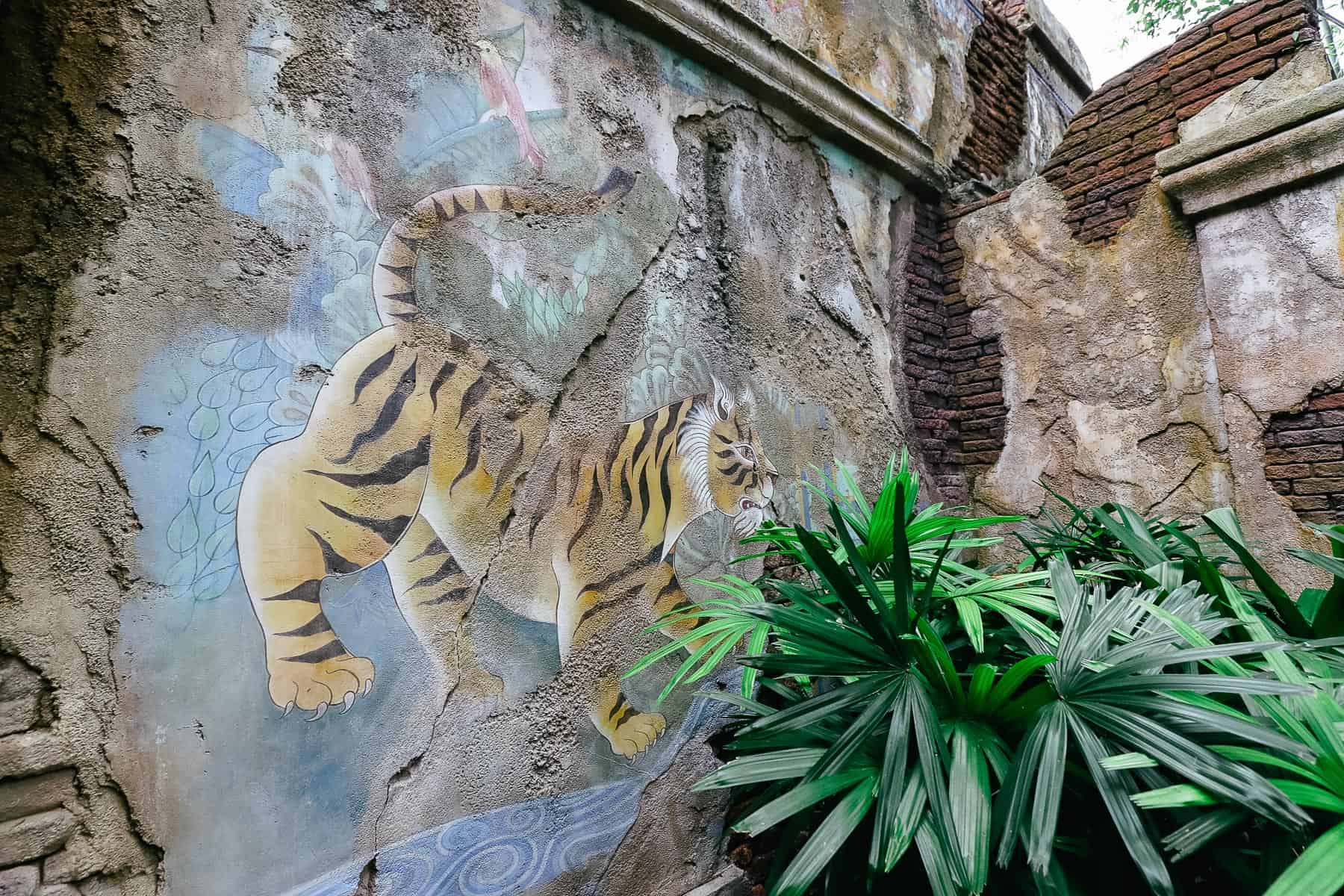
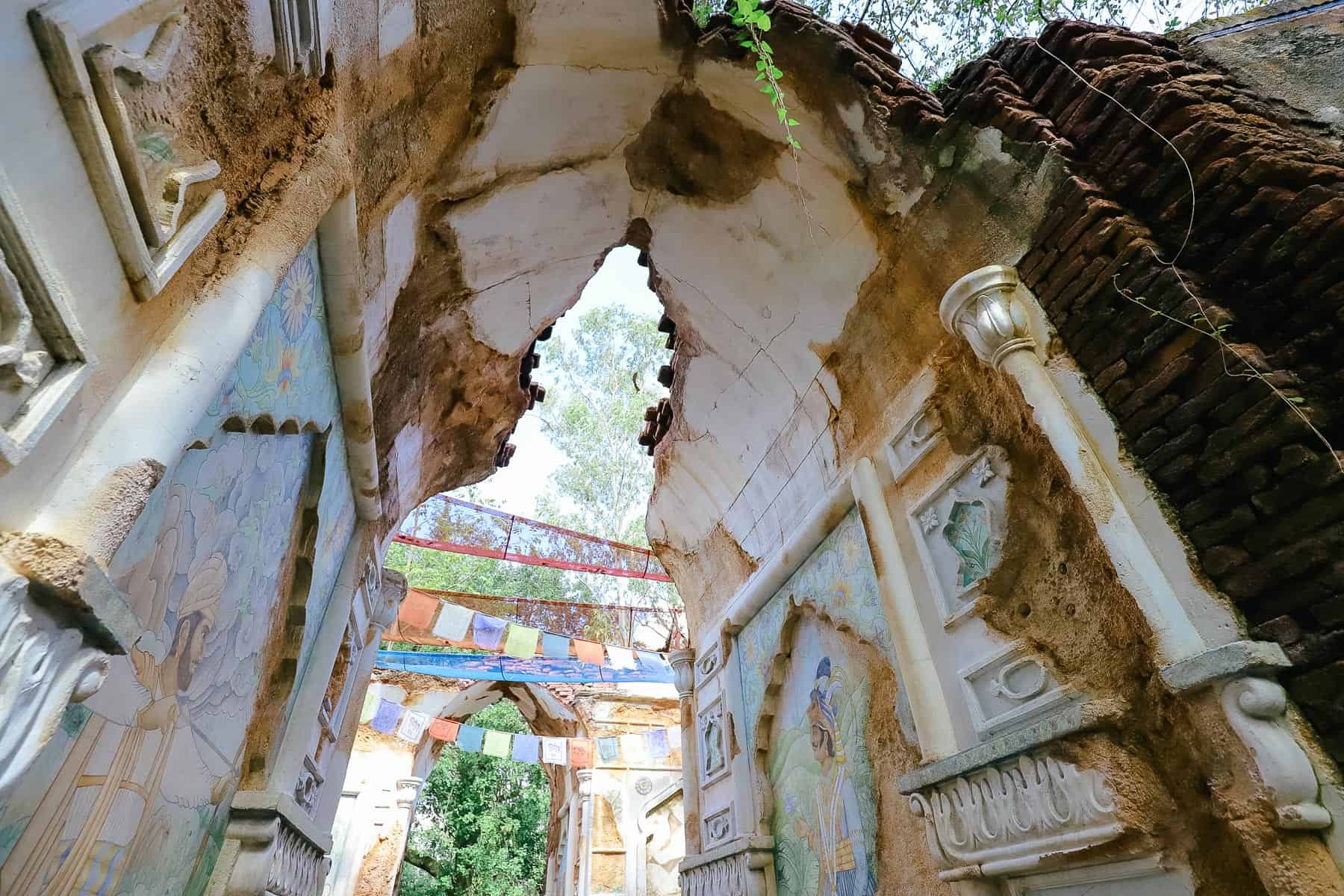
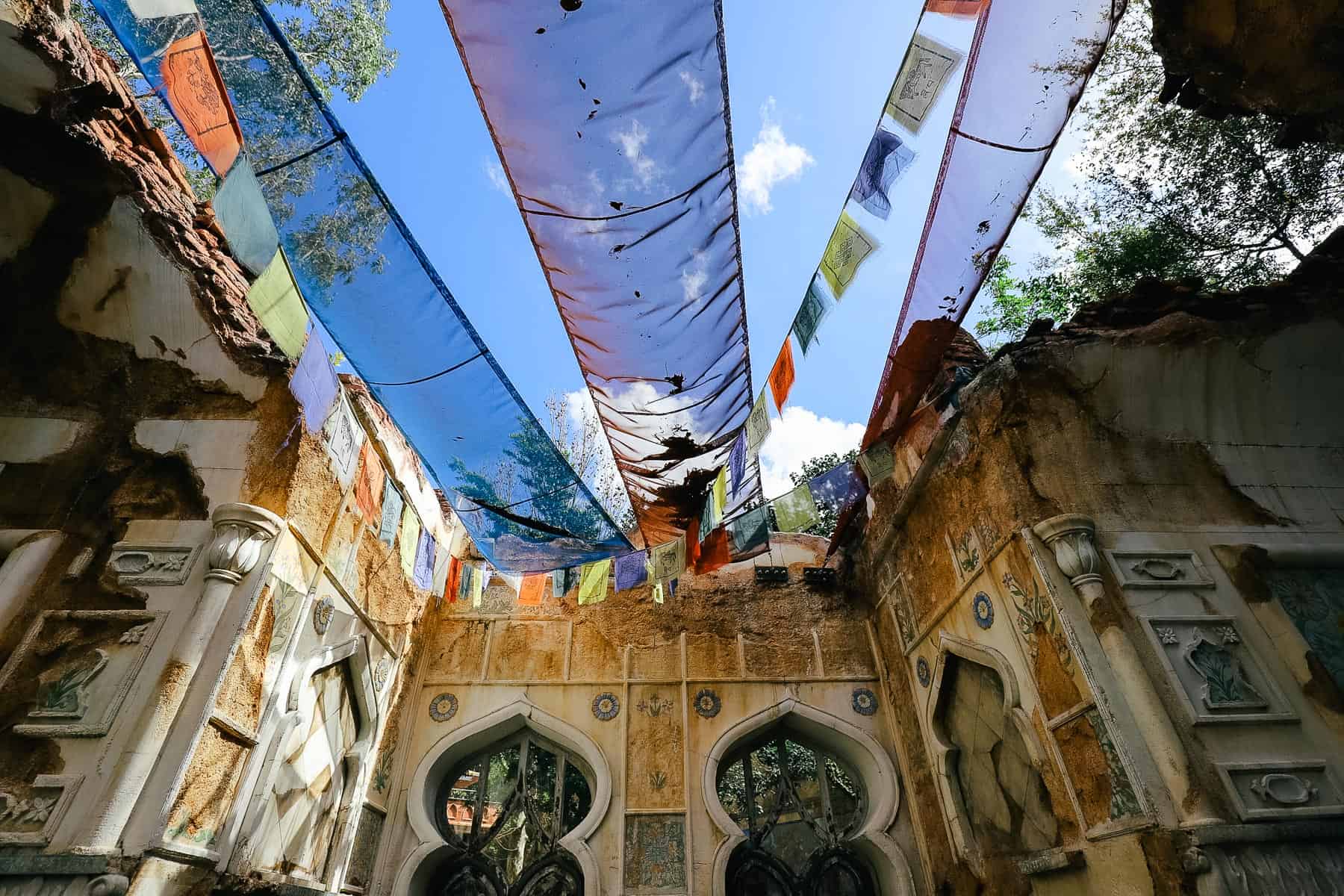
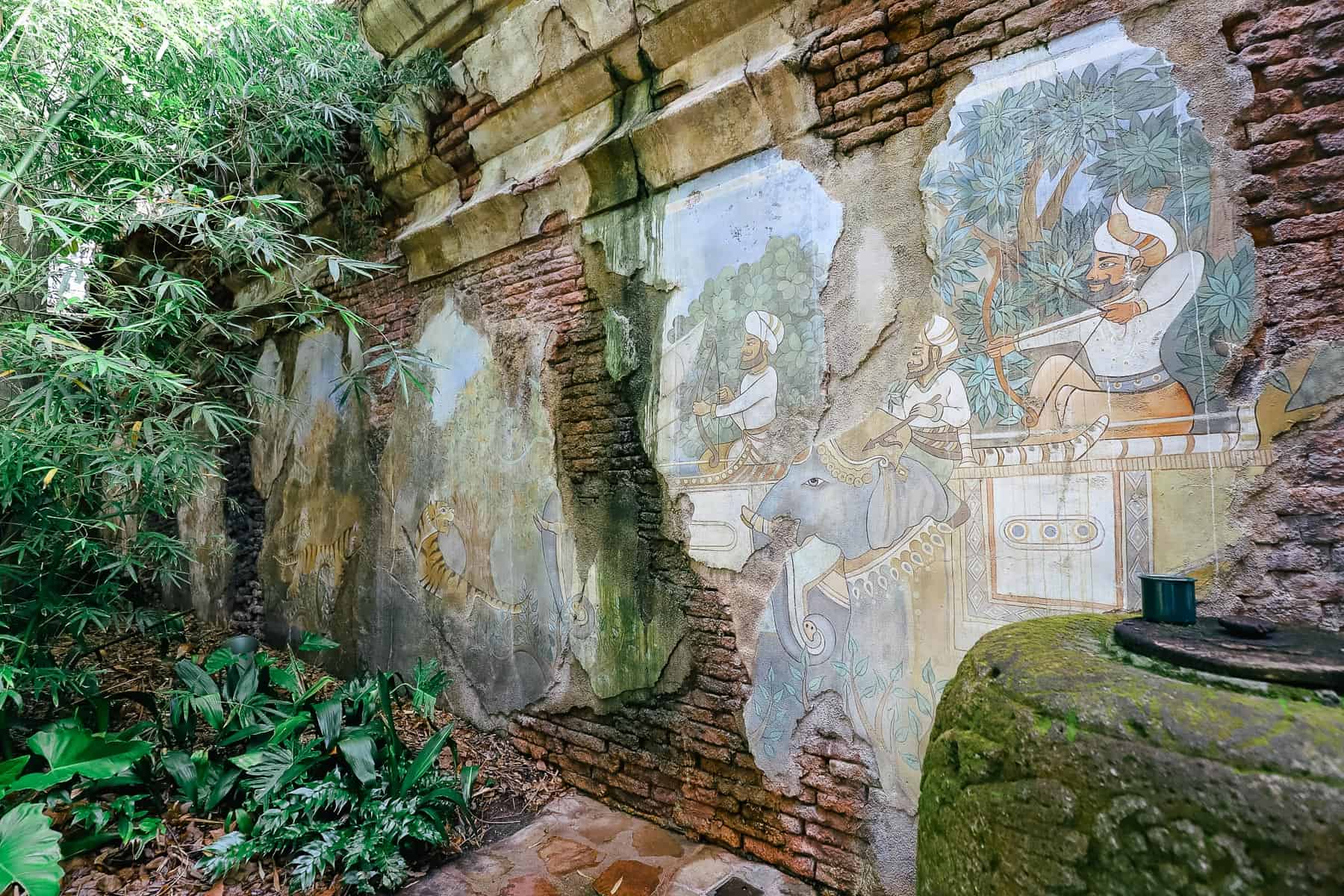
Fun fact: Each of the four Maharajah murals has a hidden Mickey!
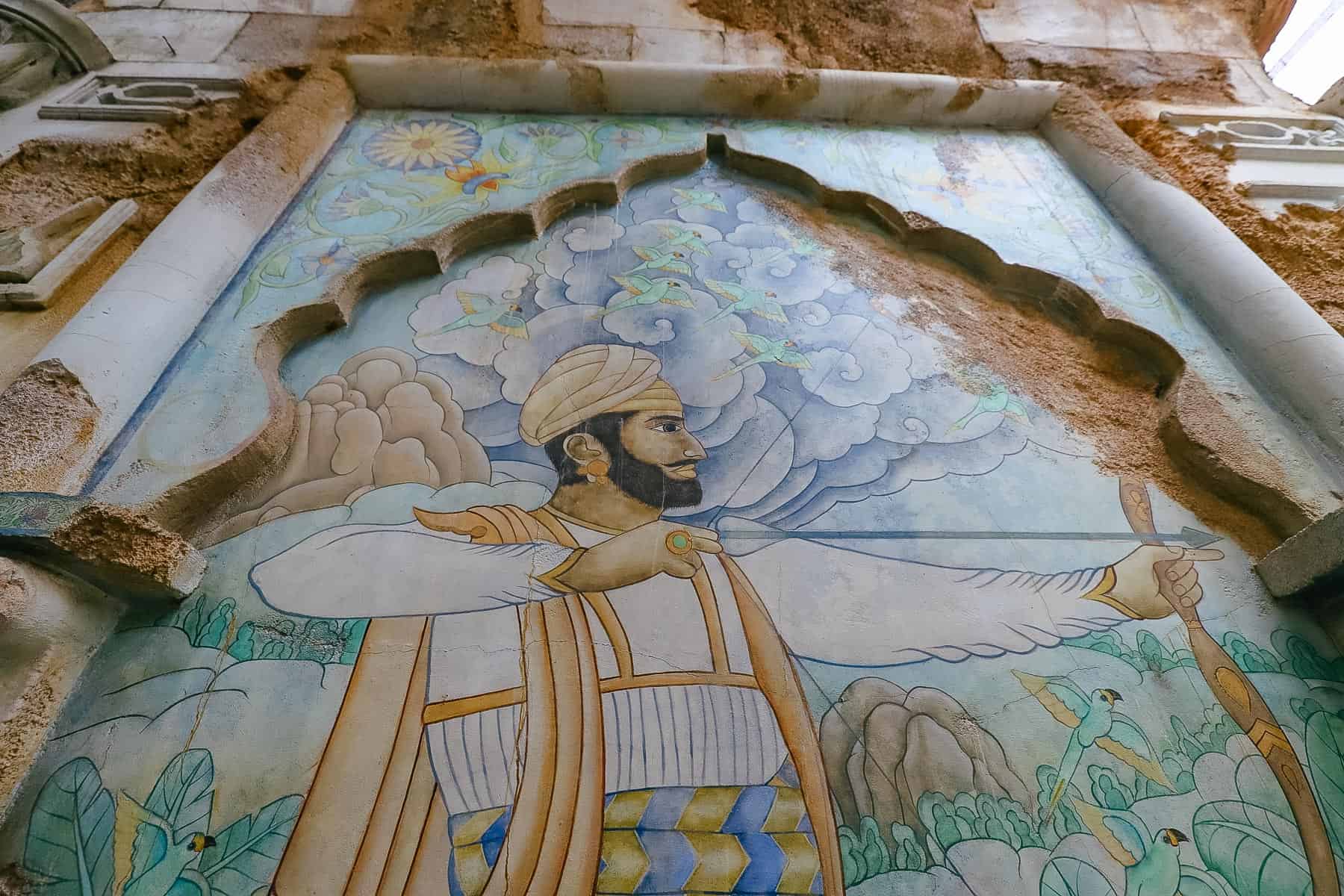
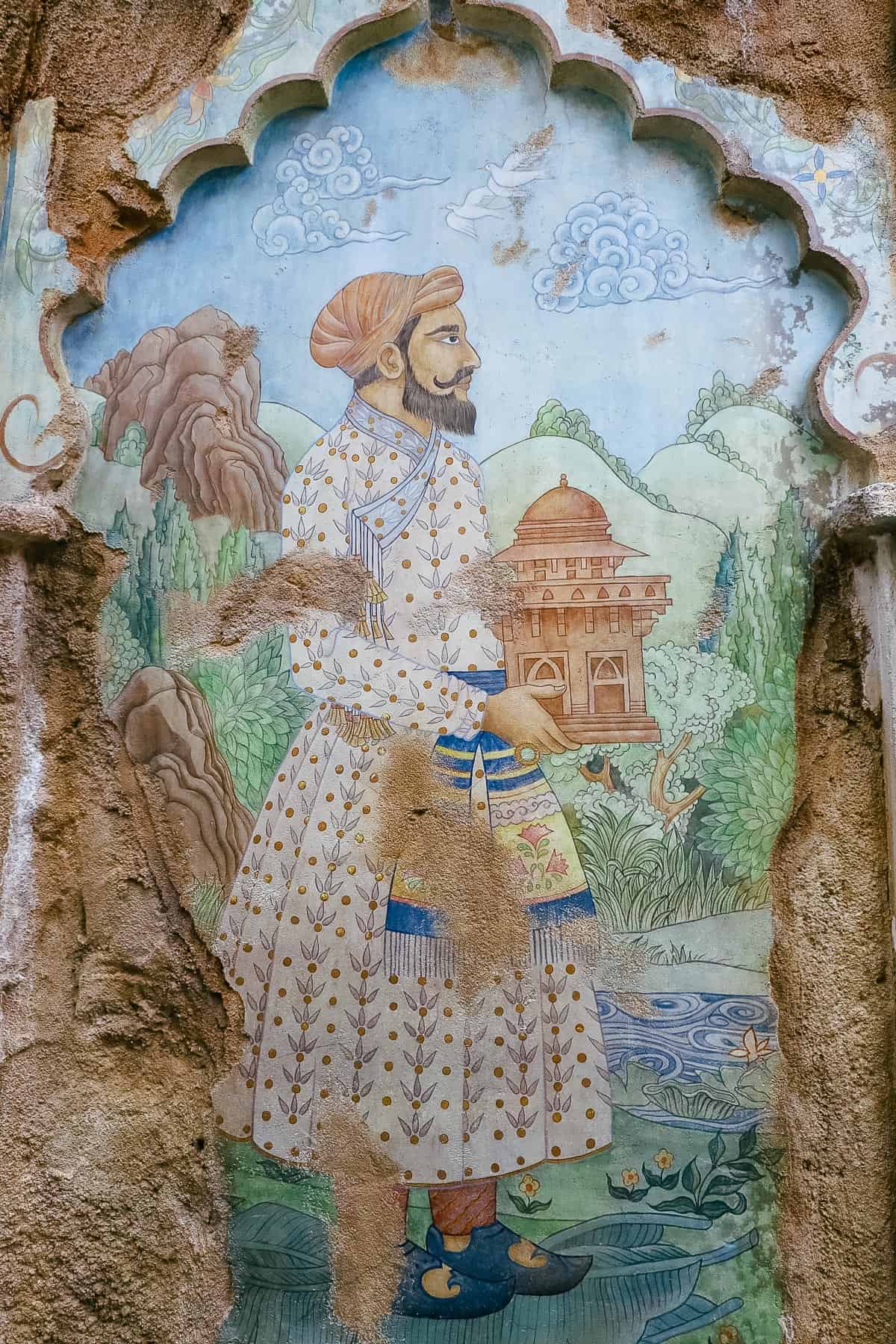
After the first tiger habitat, we continue into a large open area. It is somewhat similar to the savanna on Kilimanjaro Safaris. Animals are often grazing nearby. You might see Water Buffalo, Blackbuck, or Elds Deer in this area. Sometimes, you might see a cast member feeding them. If so, you’ll get to see a good deal of activity. The Blackbucks have unique horns and are the fastest antelopes in the world.
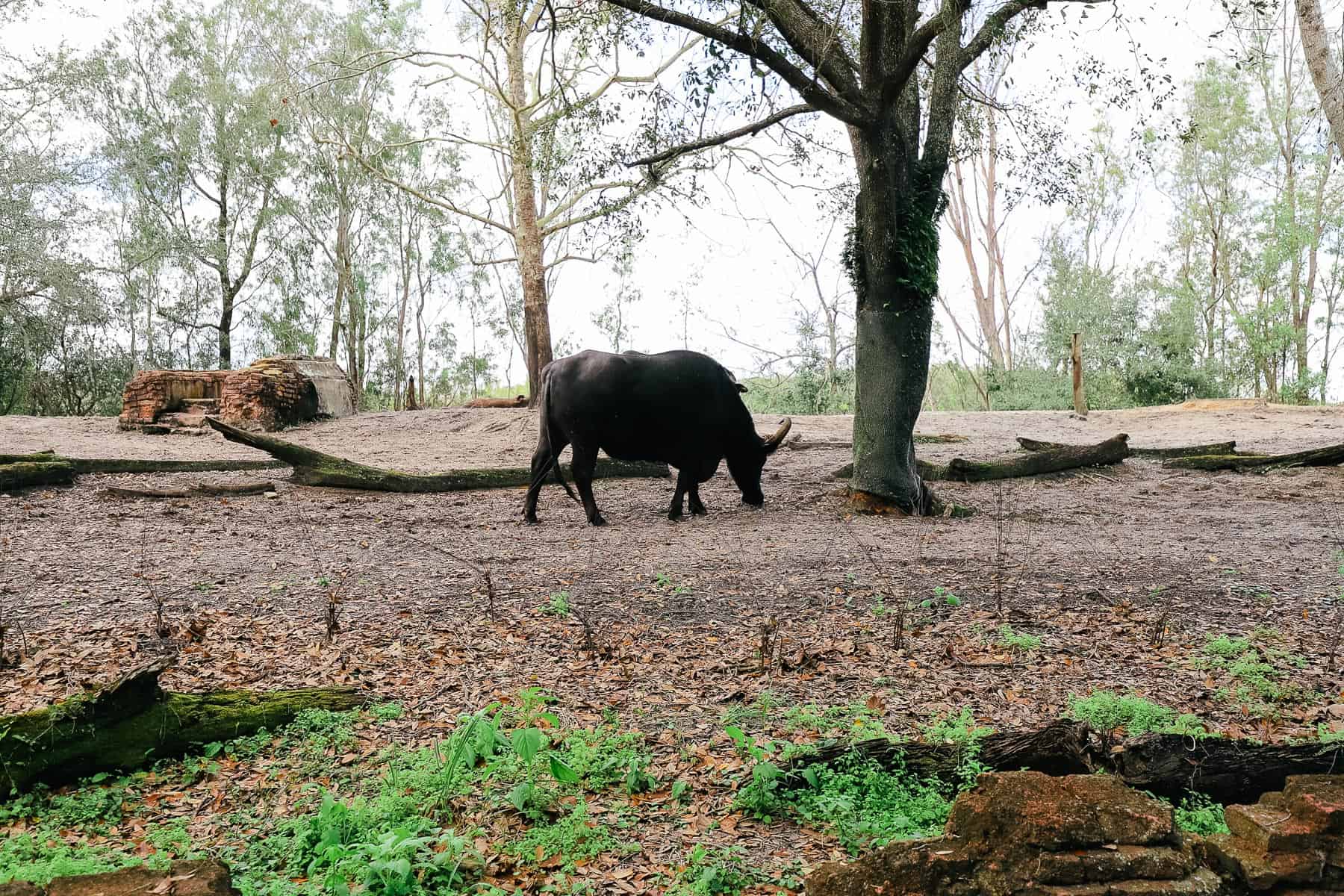
This is also an excellent spot to take a break.
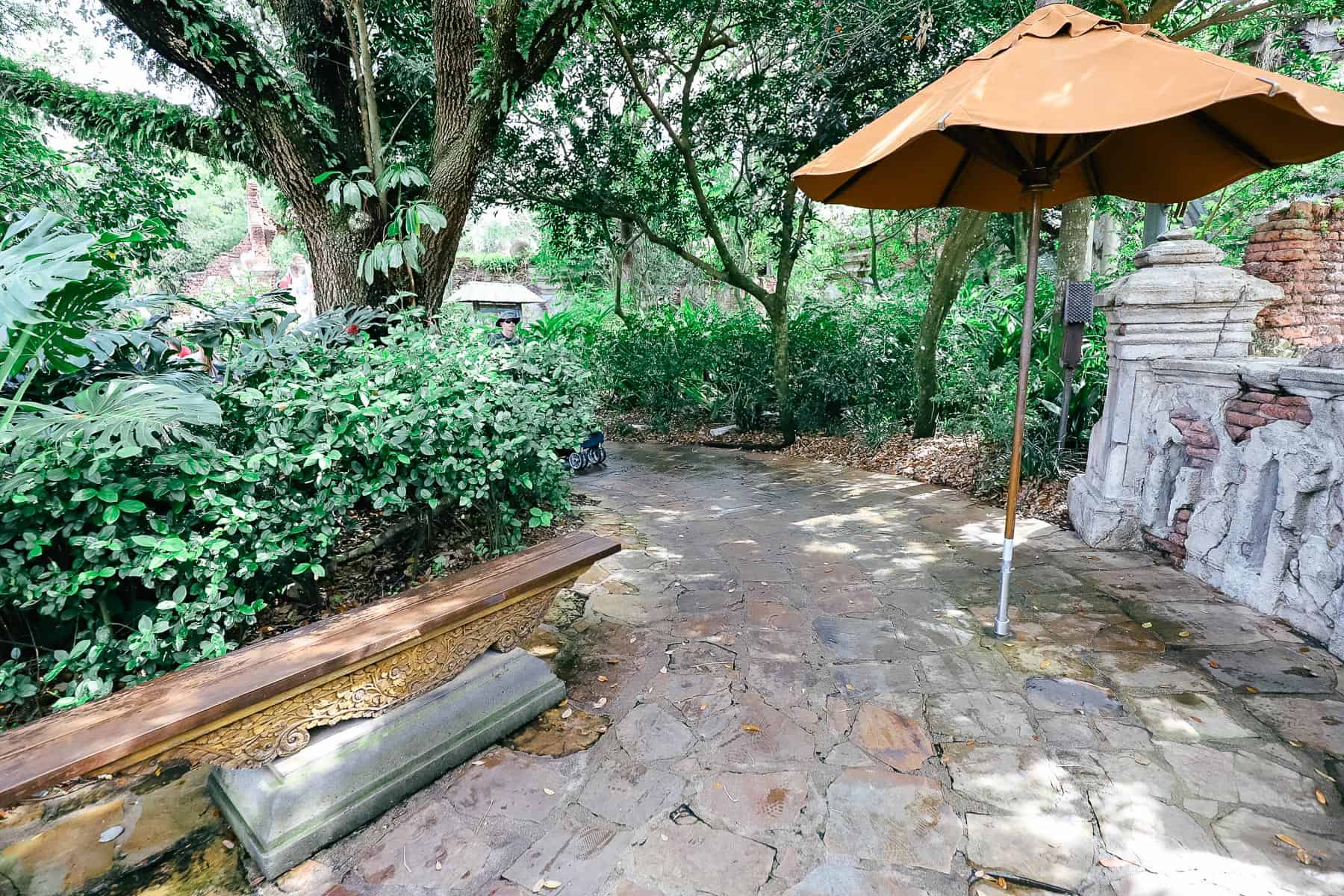
A few water fountains are nearby.
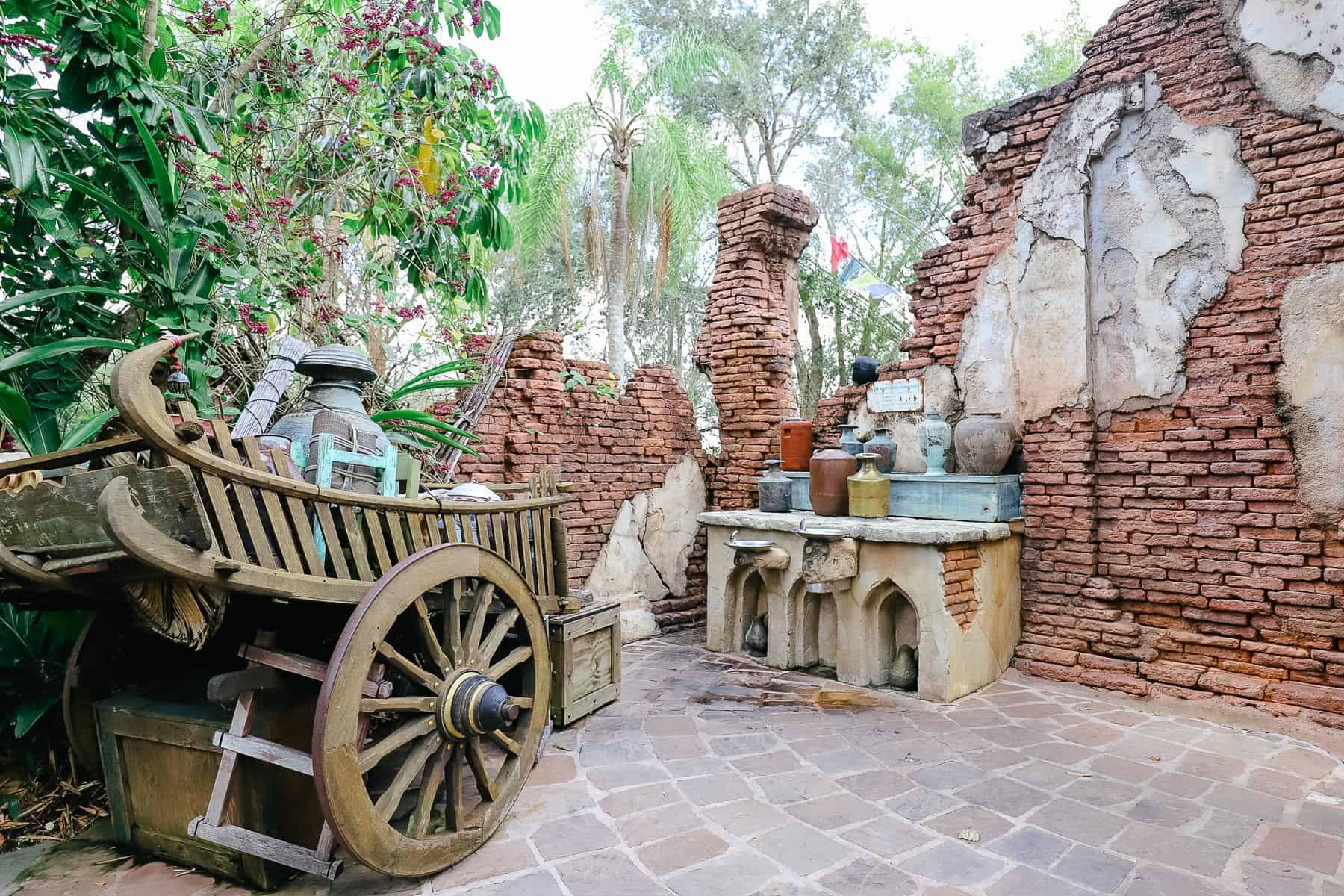

As we continue our journey through the forest, we come across a bridge with viewing areas on each side. The bridge itself is a showpiece.
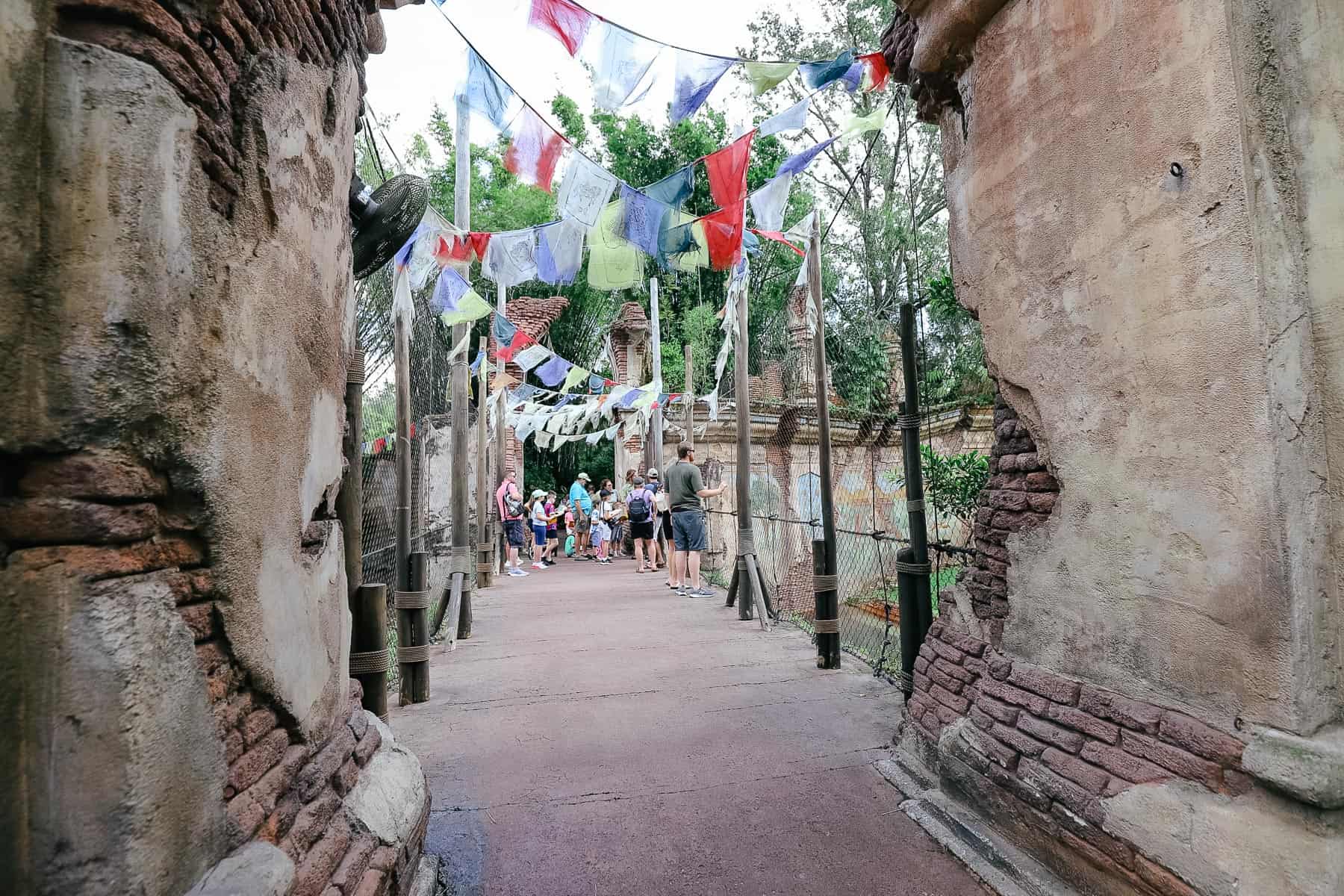
To the right side, you’ll look into the other tiger viewing area. This is usually where the female tiger is located.
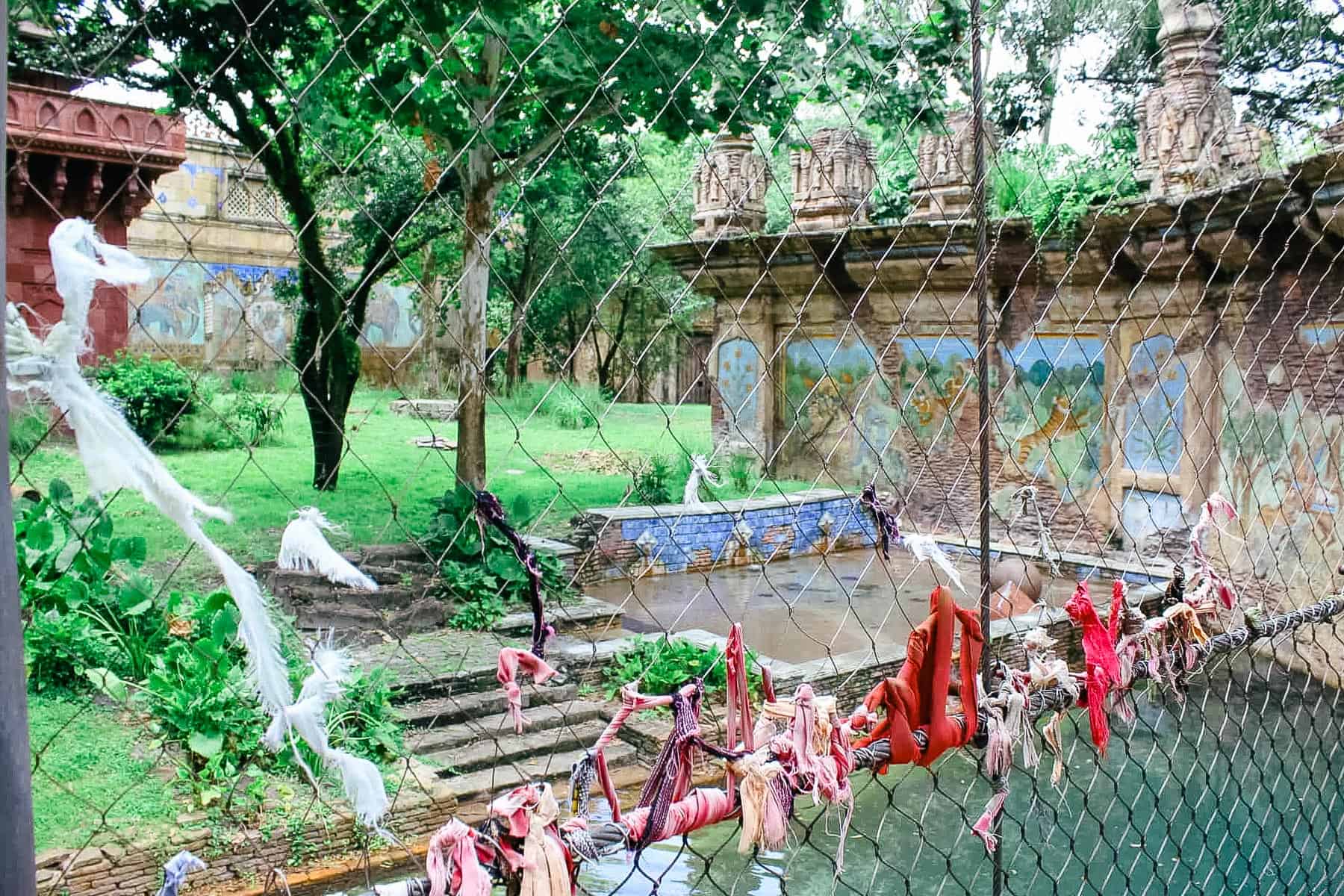
Prayer flags are strung overhead, and ties are woven into the fencing.
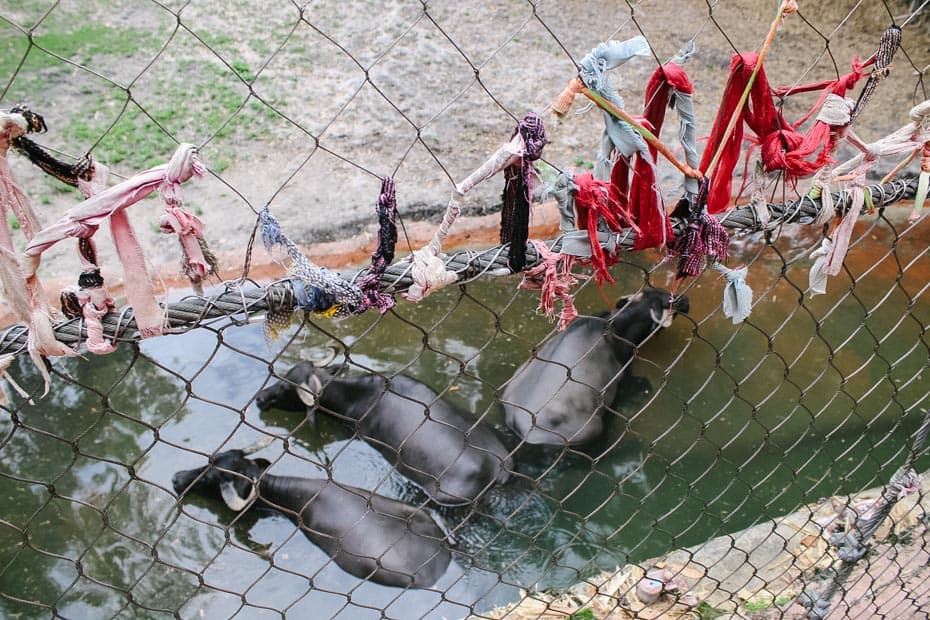
Sometimes you might see a few water buffalo on the opposite side of the bridge.
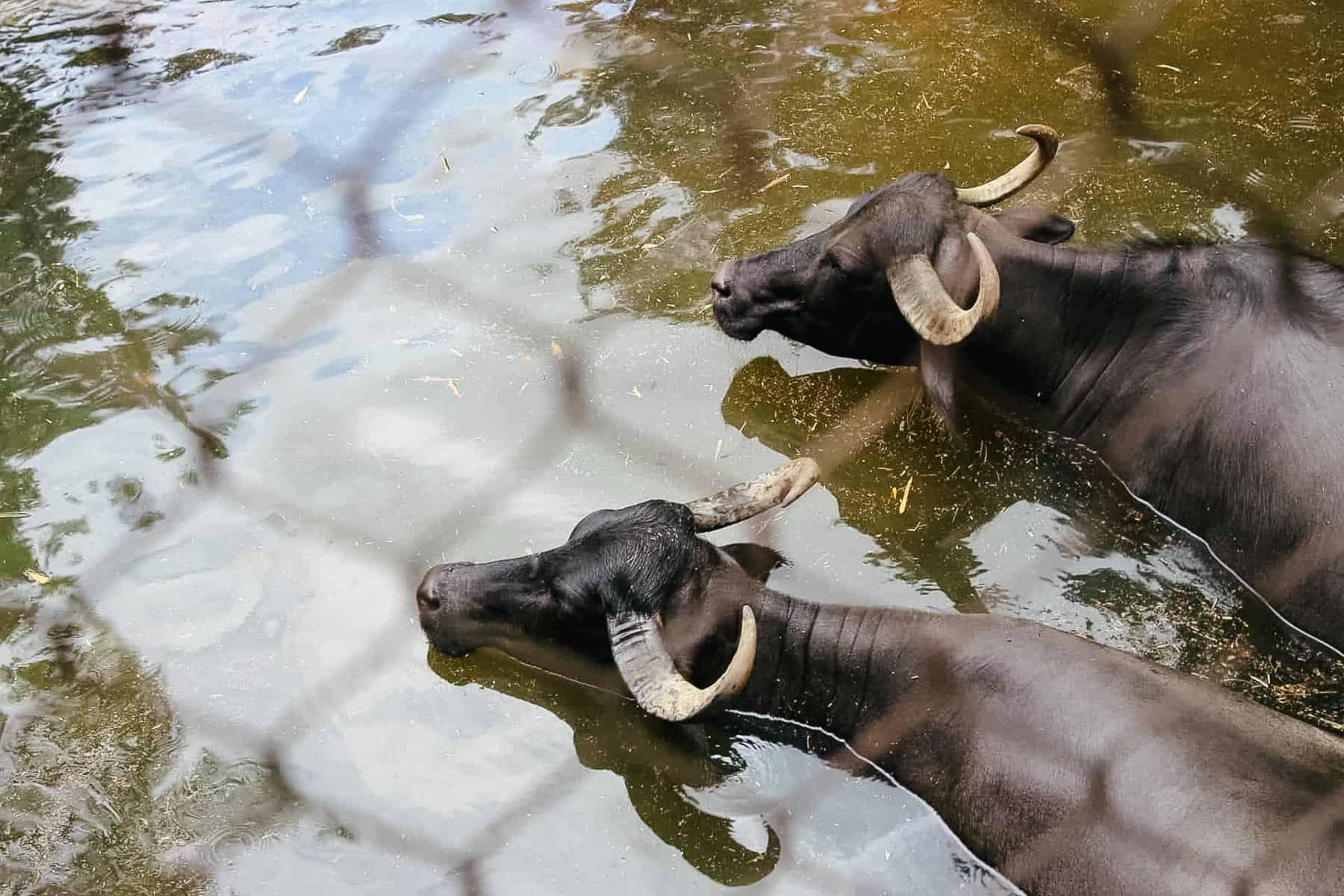
If you see a cast member in the area, they will typically point out hard-to-see animals. Animal Kingdom cast members are very knowledgeable about the animals and encourage questions.
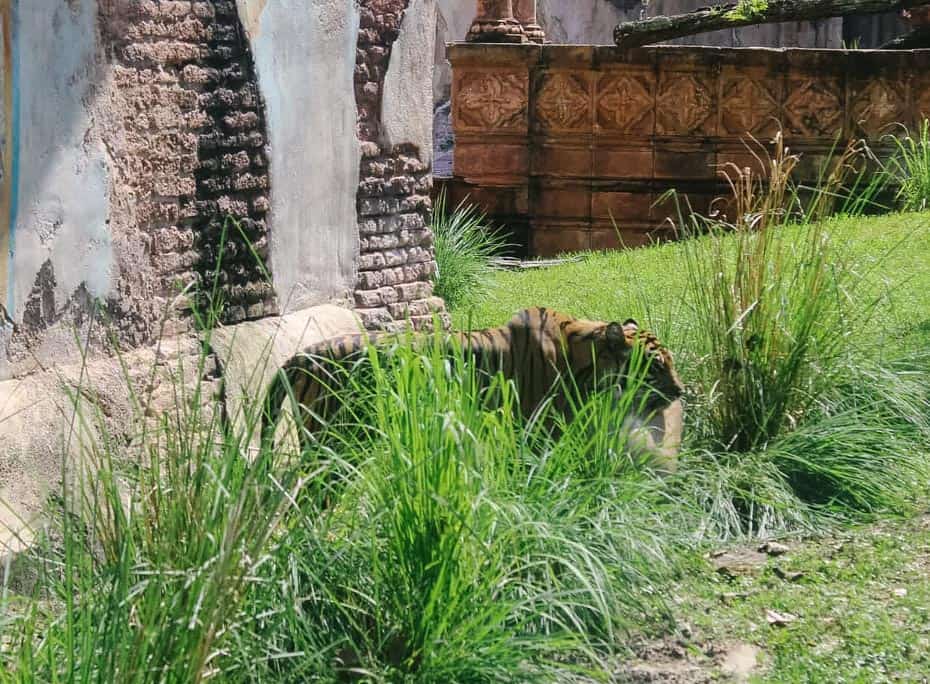
As we near the trail’s end, we come across another wall of murals.
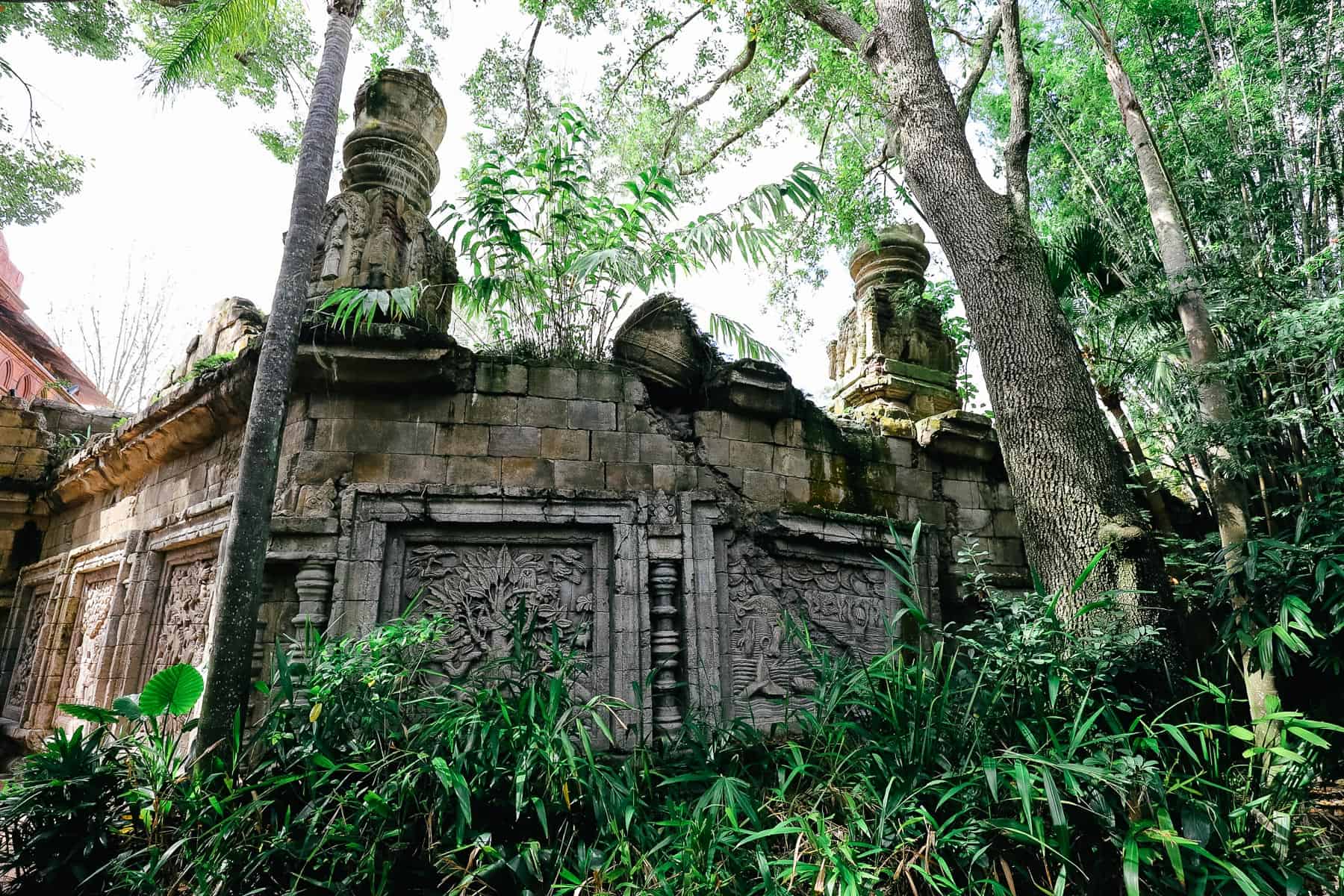
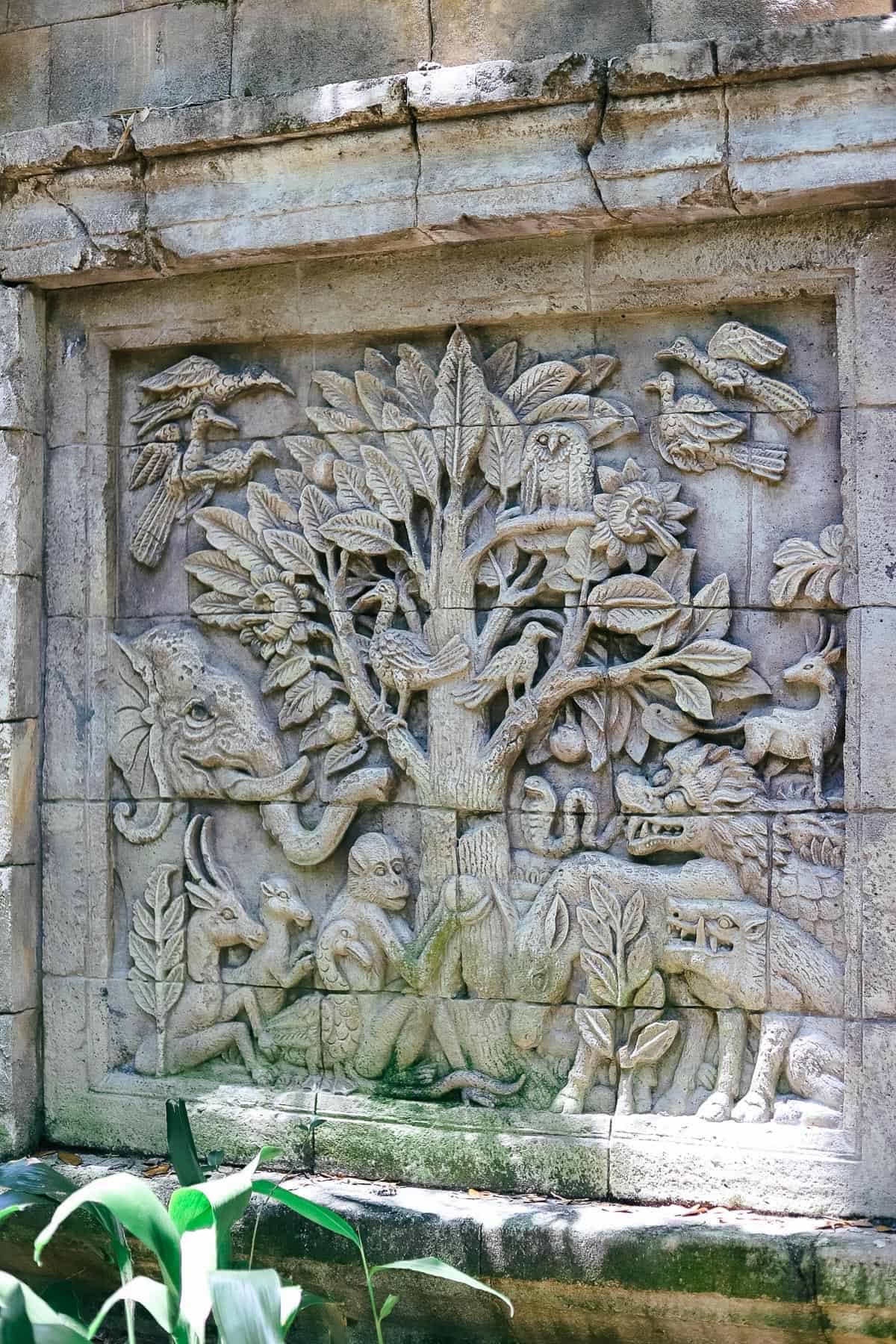
Here, we enter a smaller building, which is home to the last tiger viewing area.
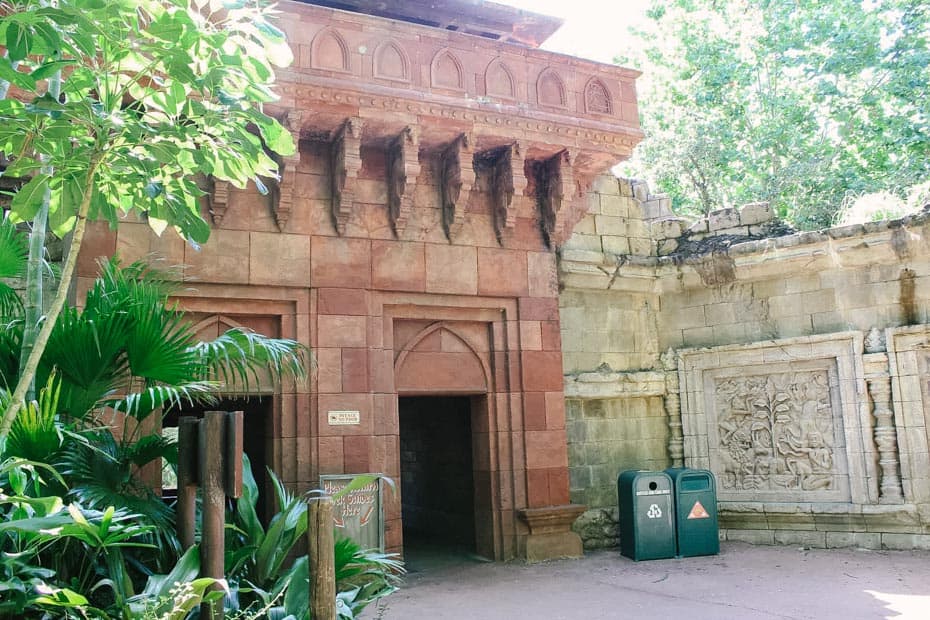
This is usually the best place to see the tiger we looked for from the bridge. Often, she’s against a wall in a striped pile, taking a nap.
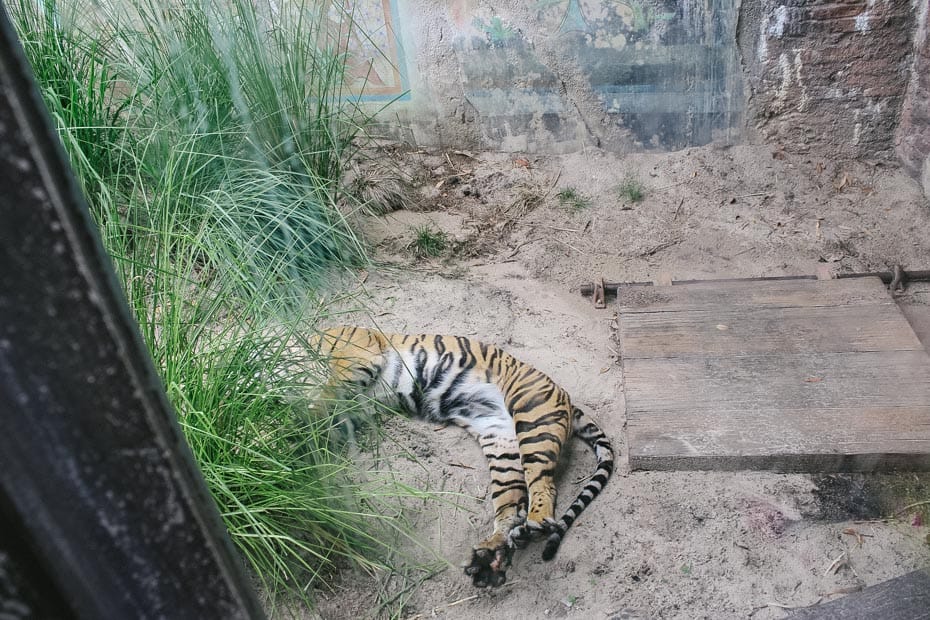
Birds on the Maharajah Jungle Trek
So at this point, you can continue through the building into the bird aviary. This is one of the best parts of the trail. However, if you don’t care for birds, you can walk back out the same way you entered. The pathway outside bypasses the aviary and continues to the exit.
If you continue, you’ll walk through a set of plastic chains and enter the aviary. These chains keep the birds from flying into them like they might a glass window. It’s gorgeous inside.
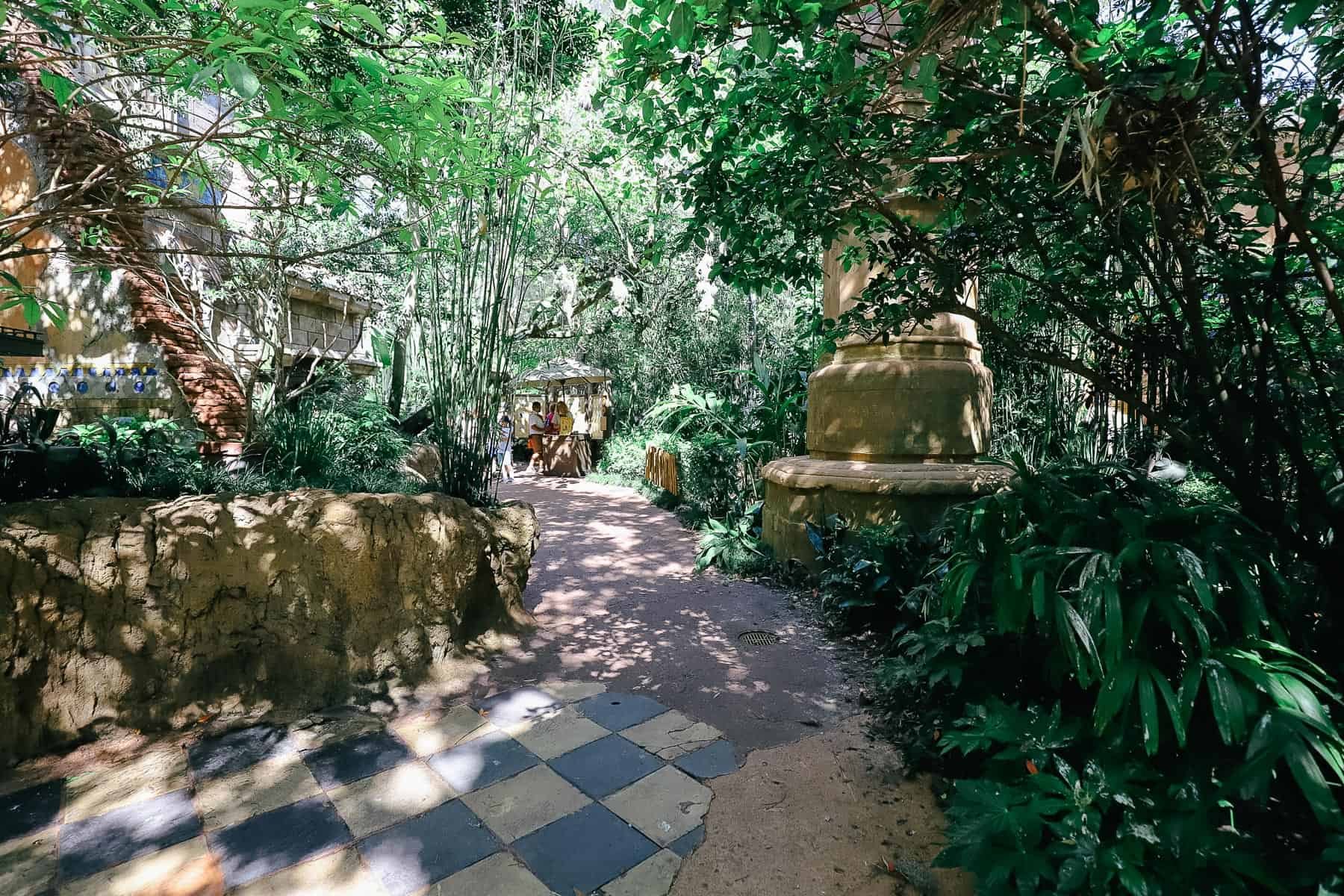
Bird guides are available if you need help identifying them. While it’s not an ample space, the aviary is packed with birds. Some of the birds you’ll see include Palawan Peacock Pheasants, White-Rumped Shamas, Victoria Crowned Pigeon, King Parrots, Fruit Doves, Plovers and Indian Rollers.
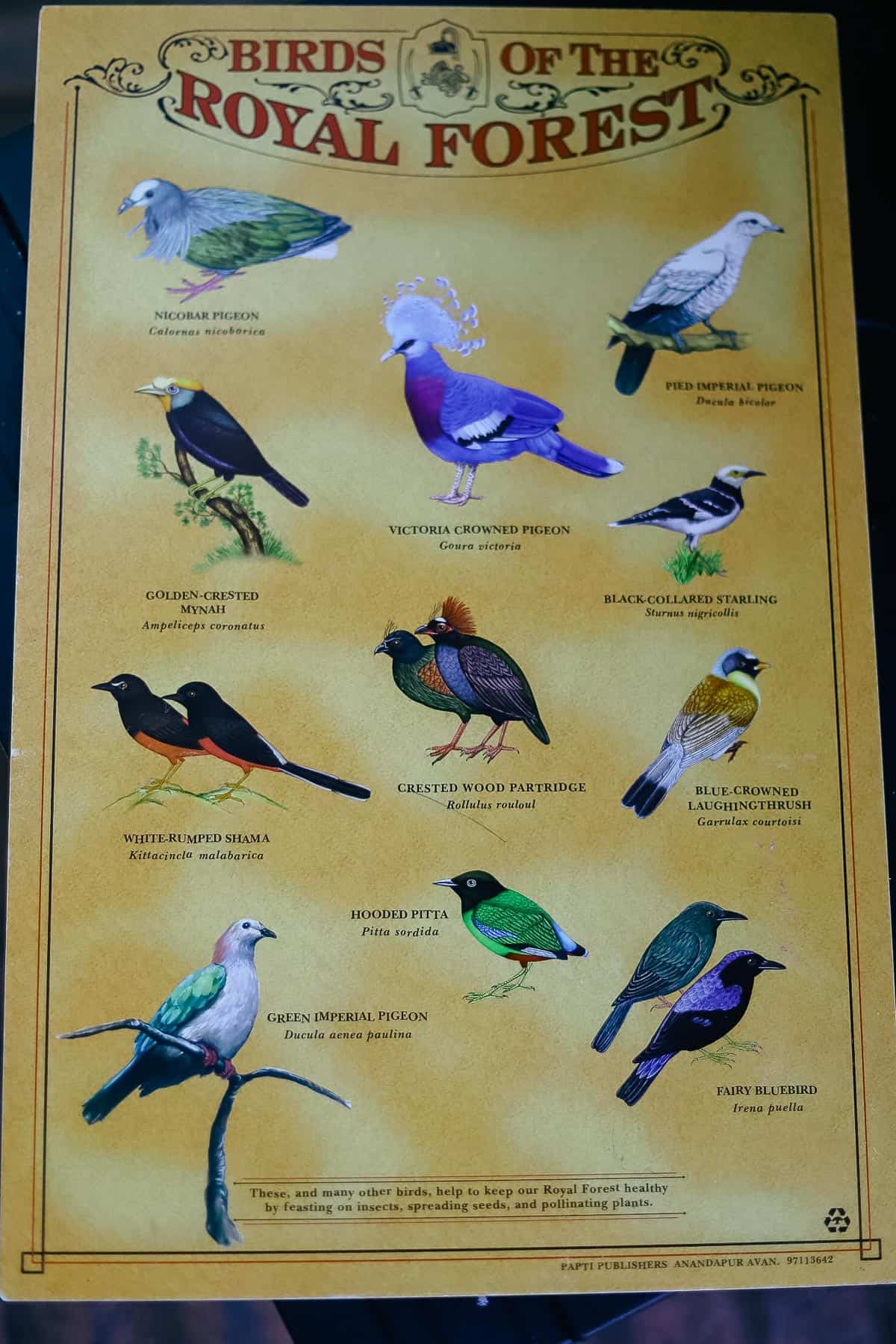
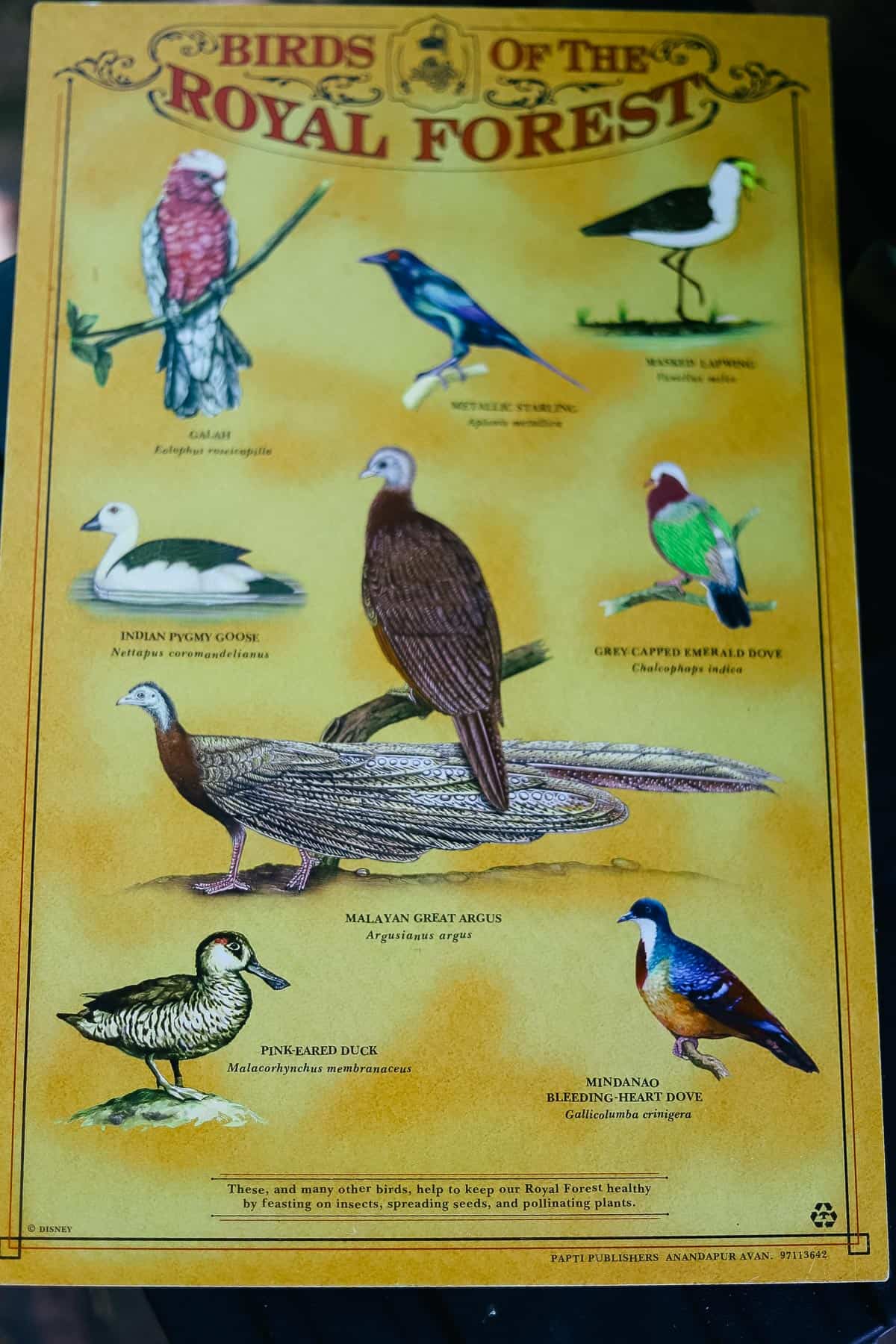
Unfortunately, you won’t see many birds if you walk through quickly. However, if you pause and take the time to look a little closer, you’ll start to see them.
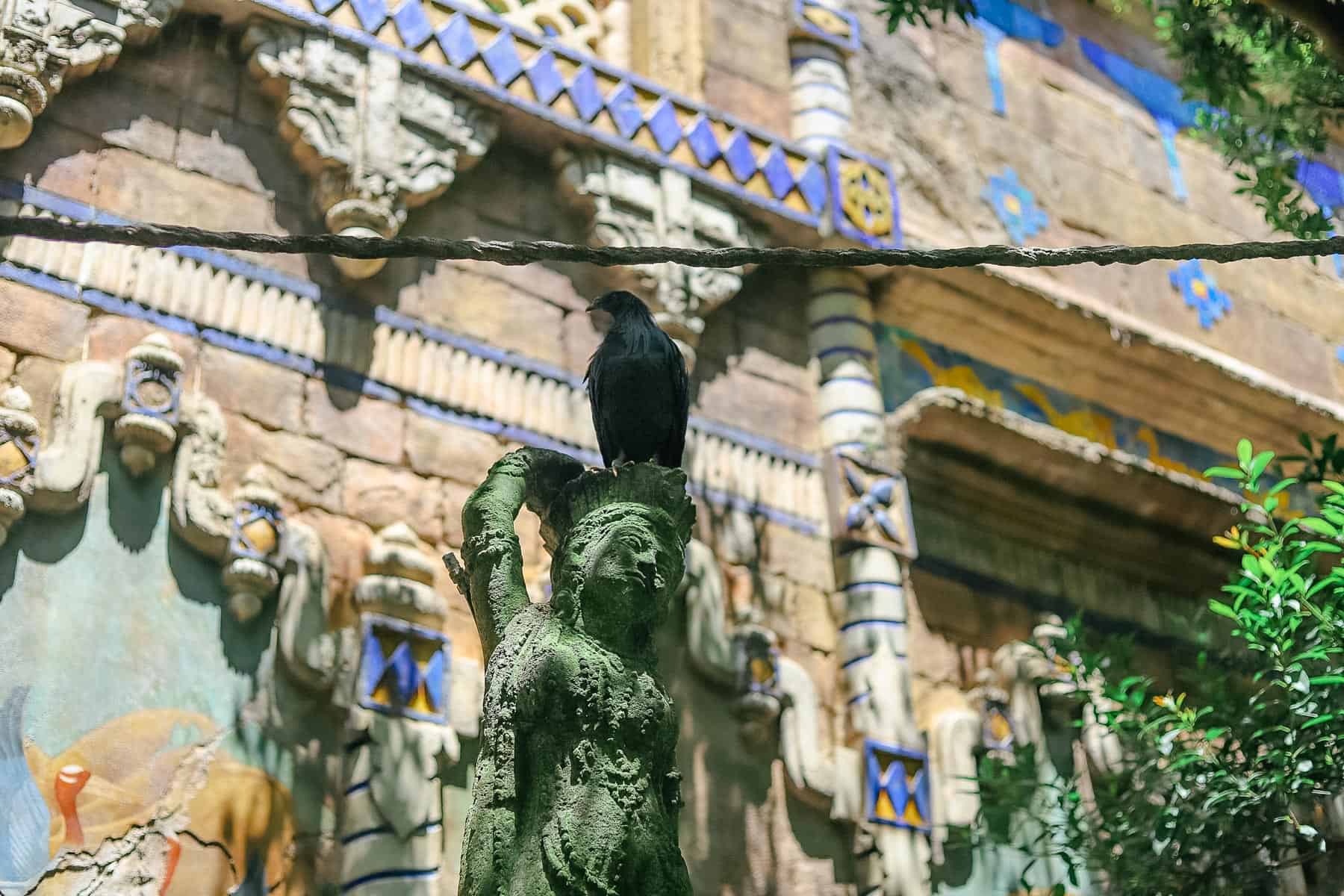
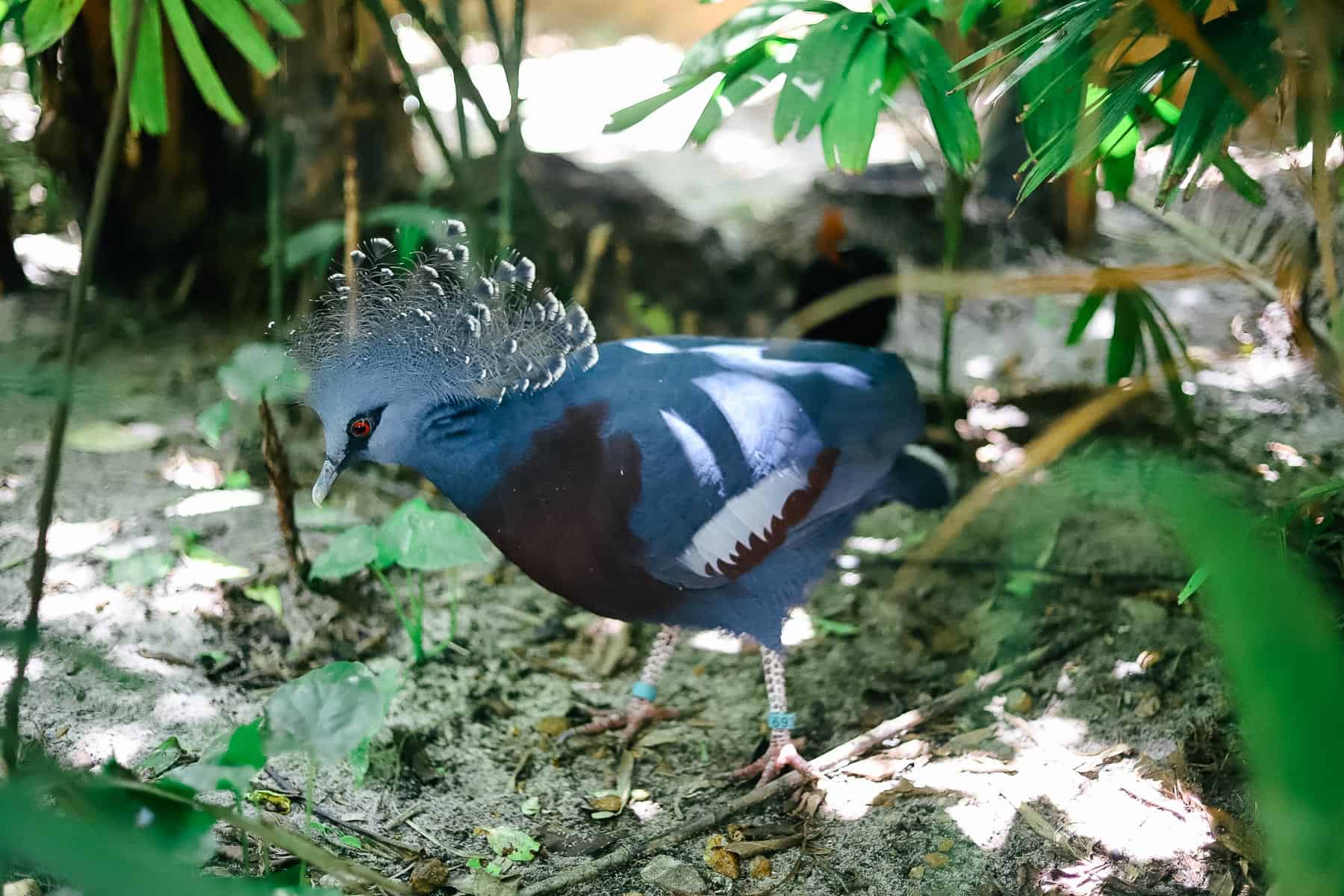
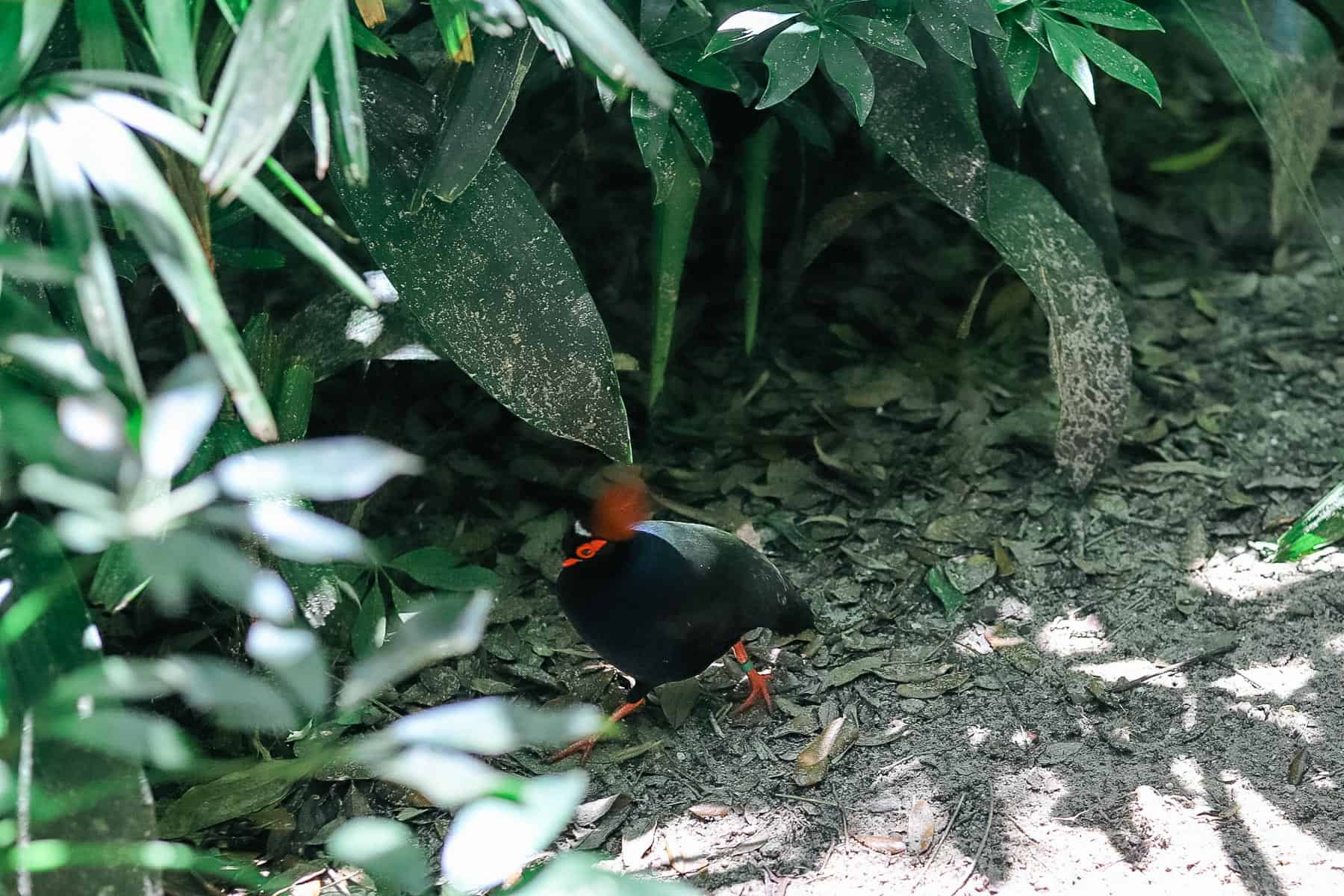
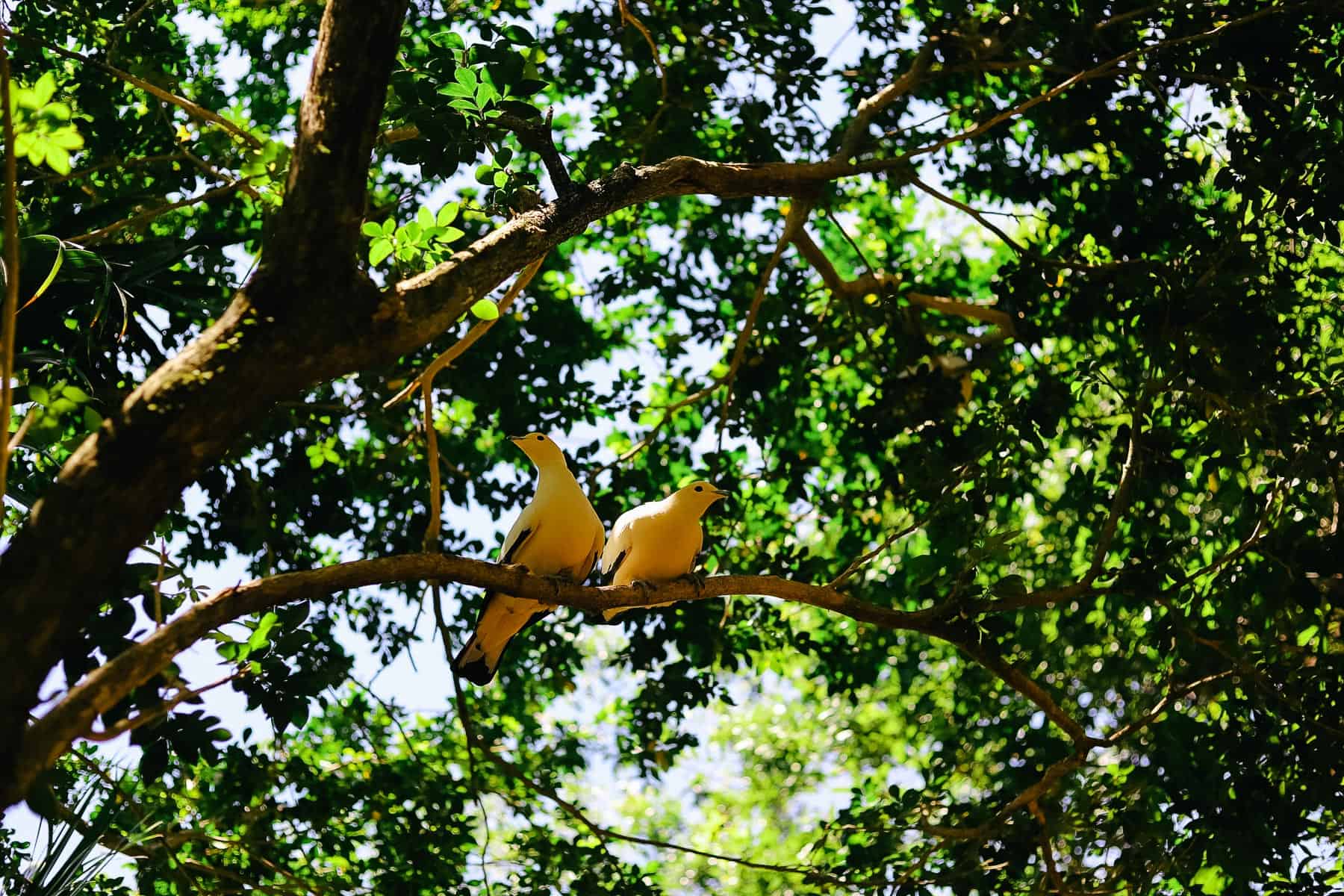
No worries, these birds were sunbathing!
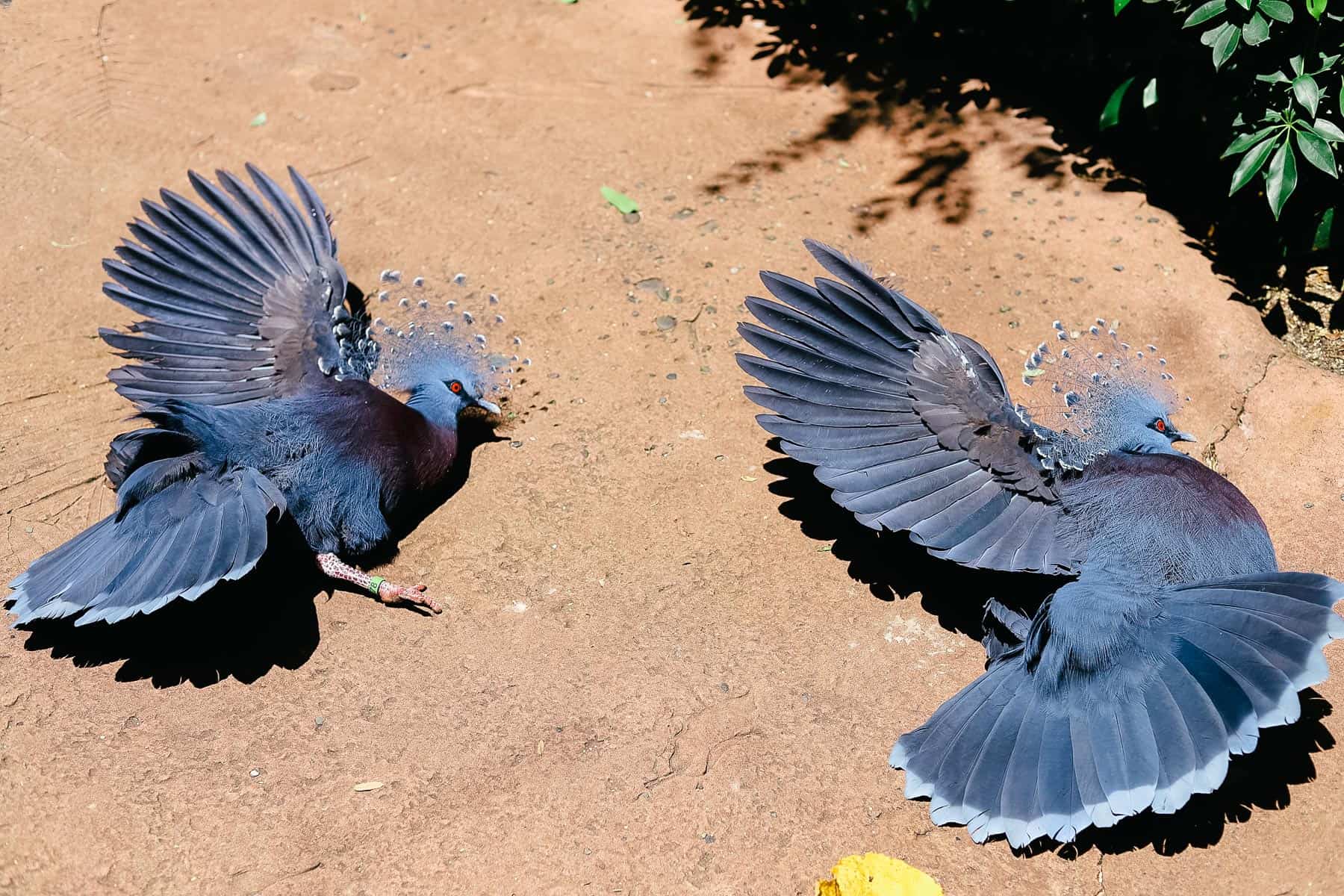
A fountain sits in the center of the bird sanctuary. It has an Arcadian feel.
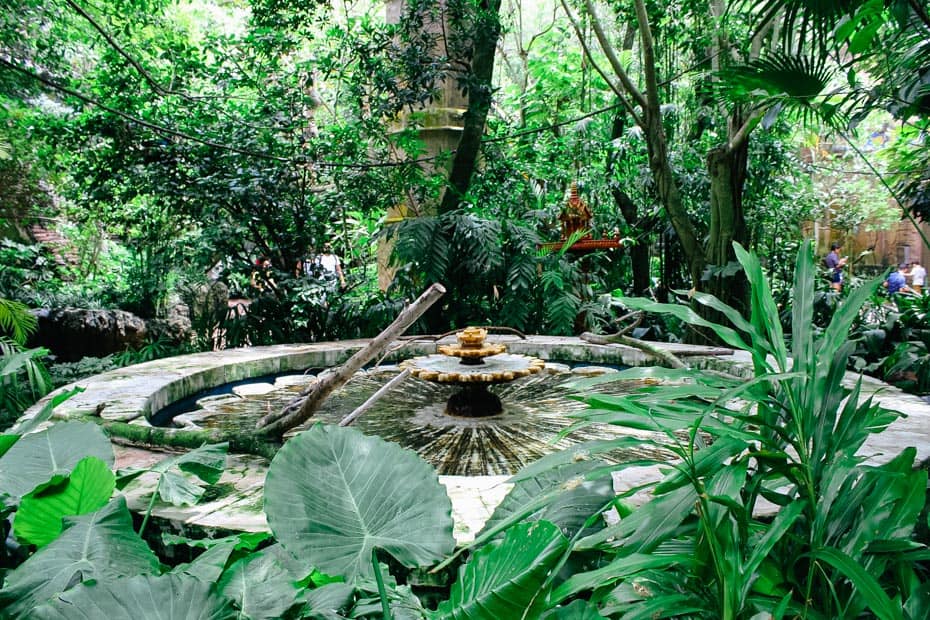
Many birdhouses are scattered throughout.
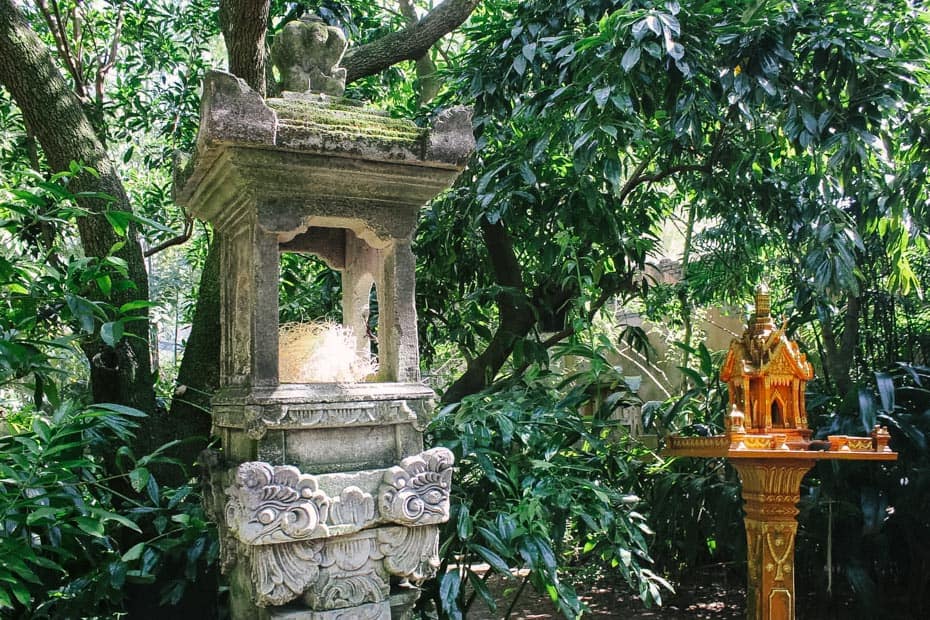
Here is a close-up of a rather colorful bird.
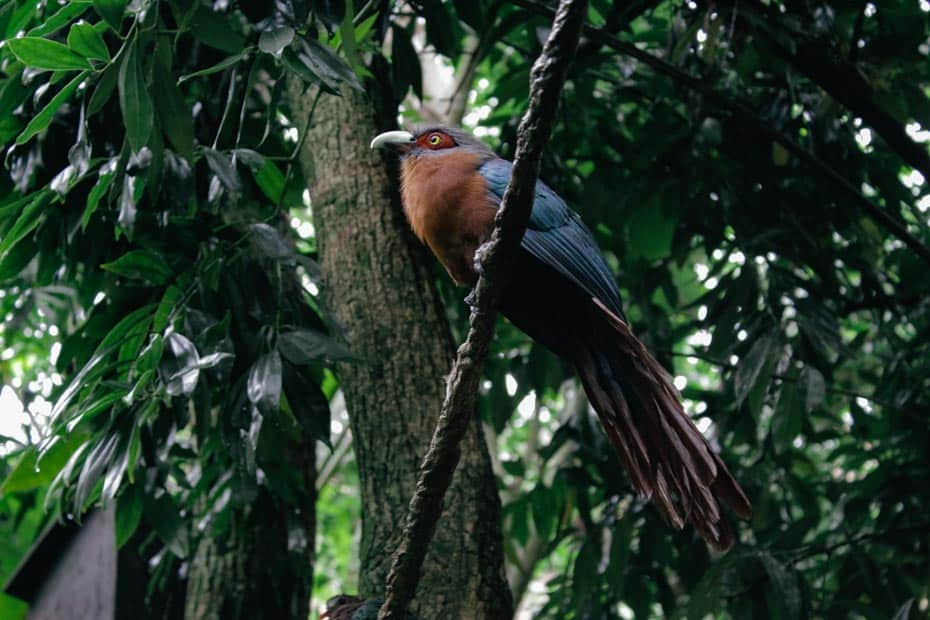
You might even see the Malaysian Great Argus, a great bird indeed. A cast member told me whatever you do, don’t stand underneath it!
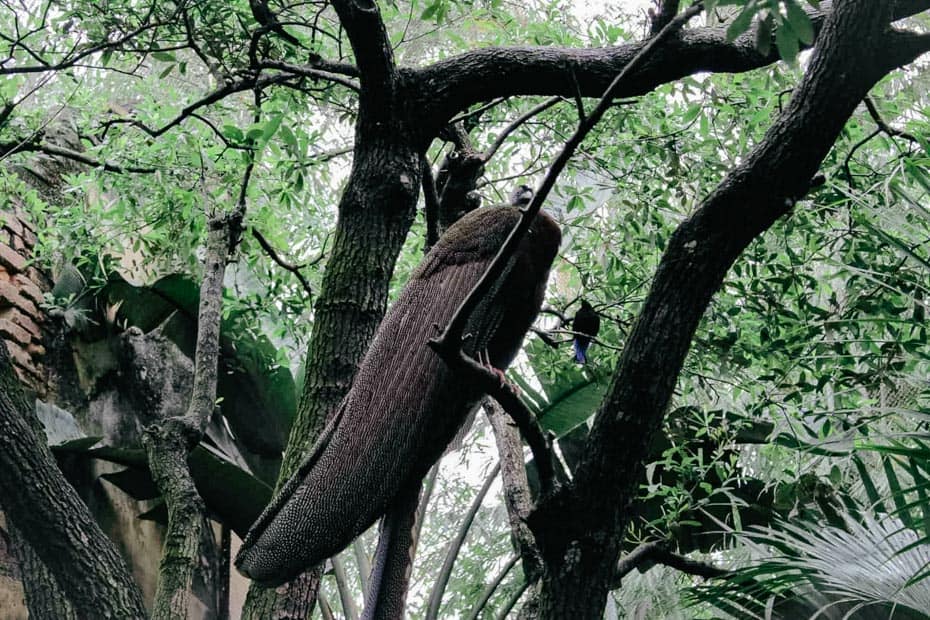
Here is another picture of it. Just look at those tail feathers!
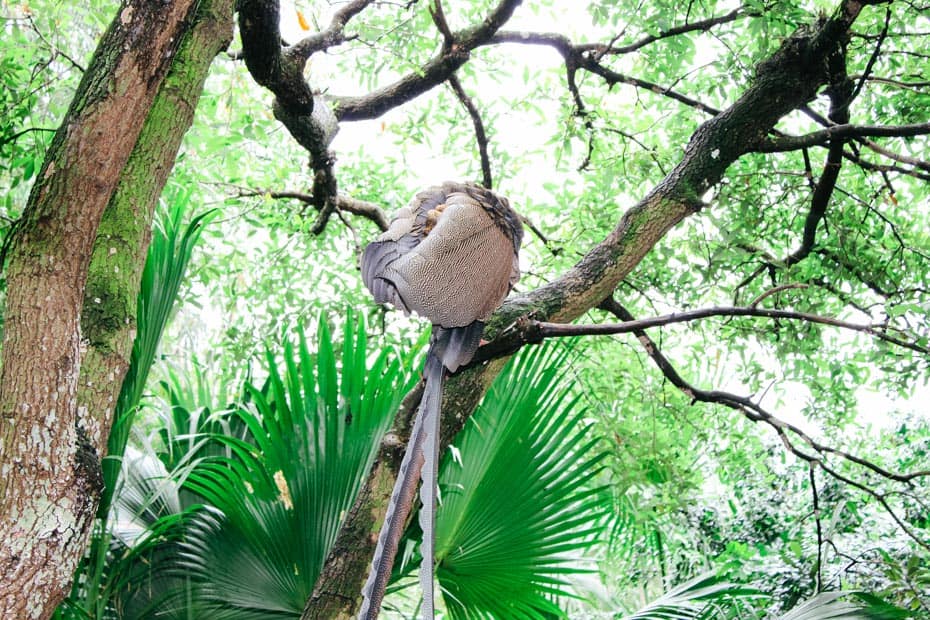
As you exit, you’ll walk through another chain partition. Sadly, we have reached the end of our journey on the Maharajah Jungle Trek.

The Resorts Gal Spin on Maharajah Jungle Trek
We give Maharajah Jungle Trek the green light! This is an anytime attraction that you can do at your leisure. If you want to see the tigers active, your best bet would be to visit earlier in the day than later. We recommend getting one or two major attractions out of the way and then taking a stroll through the trek. However, if you have other priorities, it can wait until later in the day.
Overall, the Maharajah Jungle Trek is a must-do on our visits to Disney’s Animal Kingdom. This attraction will truly enhance your park visit in the most unexpected way.
You never know what kind of positive impact this type of experience might have on your children. It’s also a place where you can slow down and enjoy things at your own pace. You’ll want to remember that this trail closes earlier than the rest of the park.
Resorts Gal Traffic Signals
Green Light
We give an attraction the green light if we consider it a must-do, regardless of the posted wait. We also give the green light for attractions we deem suitable to experience anytime. For example, some attractions have high capacities. Therefore, the lines continuously move and you shouldn’t have a long wait unless the attraction experiences downtime.
Red Light
We recommend checking the posted wait times for red light attractions. Then, make a quick judgment call on whether to wait, skip it, or return later. We also red light some attractions that we feel might not be suitable based on our experience.
For more on the park, you might enjoy the following:
- Gorilla Falls Exploration Trail
- Discovery Island Trails
- The Oasis Exhibits at Animal Kingdom
- Rafiki’s Planet Watch
Or you might like some of these others:
- Expedition Everest at Animal Kingdom
- Dinosaur Ride at Animal Kingdom
- Finding Nemo: The Big Blue…and Beyond
- Flight of Passage
For more on Disney’s Animal Kingdom, you might also like:
- List of Animal Kingdom Attractions and Entertainment
- Our Complete Guide to Animal Kingdom Characters
- Animal Kingdom Quick Service Restaurants
Or refer back to our Disney World Parks Planning Guide.
The Road Map to Magic
Unlock the magic of a perfectly planned Disney vacation—sign up for instant access. It’s completely free!

